Guacharo Cave. Tourist site and National Park. In Monagas- Venezuela. // Cueva del Guacharo. Sitio turístico y Parque Nacional. En Monagas- Venezuela.[ENG-ESP]
Guacharo Cave. Tourist site and National Park. In Monagas- Venezuela. // Cueva del Guacharo. Sitio turístico y Parque Nacional. En Monagas- Venezuela.[ENG-ESP]
Greetings to all the hivers who are willing to travel through the posts of others, unique fun because with the photos and imagination without limits you get to see, feel and live all the description of the site that is described. I must say that I say this to live it because it is what I felt when reading other hivers telling their travels and showing such beautiful photos, I have really enjoyed them. In this Pinmapple community is the perfect option for this to happen because you can travel to regions that you may not be able to see for yourself in person because they are in remote places or are areas that only those who live in them or nearby can discover and share. That is the case of the Guacharo cave, a tourist site in the east of the country, in a town called Caripe el Guacharo, Monagas state, Venezuela. It is a cave that houses a bird known as Guacharo also known as bird of the caves or oily bird, is a species of caprimulgiform bird of the Steatornithidae family from South America, hence its name Guacharo Cave, inside this there are more than 10,000 specimens of this bird that have lived inside for many years. My mother was born in this town of "caripe el guacharo" and for many years when we were small we received visits from people from other parts of the country and other countries that because of their curiosity to see this cave made them travel for many hours, just to know it. I remember fondly that every time we had visitors, my parents would tell my sister and me that we had to go with them on the walk and enter the cave, it was exciting at first but after so many times the same thing happened, I didn't want to go anymore, tired of seeing the same thing every time, hahaha. The good thing about going with the visitors is that I would leave the house and on the ride they would always give us candy and food that they bought, but I already knew the ride by heart, hahaha. After I grew up, the trips to the Guacharo Cave were few, and since then I only go through the road that surrounds it because that road led to my old house of residence, but I did not go in anymore. But I must say that this cave has an intimidating and striking beauty at the same time, although it is not suitable for those who suffer from claustrophobia, so the guides who take you to make the tour of the cave ask you before buying the entrance ticket if you suffer from this type of phobia ... once you enter and begins the confinement and deep darkness, terrible for those who suffer from this phobia. Even within the tour that is approximately 1,200 meters there is a part that the cave is divided through a small passage where you only enter if you bend or crouch, it is called the cave of silence, until before that site is that you feel the noise of the guacharos, because they no longer go down to that height of the cave of silence and hence its name ... everything is silence from there on. It is very narrow that passageway and up to there come those who are very afraid of confinement, because they feel short of breath, several times I had to wait before that site, for the rest of the group to enter the room of silence and what was missing route and return, because someone who was with me did not want to enter the panic of the site, but that's how it intimidates some.
Saludos a todos los hivers que están dispuestos a viajar a través de los post de otros, diversión única pues con las fotos y la imaginación sin límites se logra ver, sentir y vivir toda la descripción del sitio que se describe. Debo decir que digo esto de vivirlo porque es lo que sentido al leer a otros hivers contando sus viajes y mostrando tan hermosas fotos, en realidad los he disfrutado. En esta comunidad de Pinmapple está la opción perfecta para que esto suceda pues puedes viajar a regiones que quizás no podrás ver por ti misma de manera presencial ya que están es sitios remotos o son zonas que solo los que viven en ellas o cerca pueden descubrir y compartir. Ese es el caso de la cueva del Guacharo, un sitio turístico que está en el oriente del país, en un pueblo que se llama Caripe el guacharo, estado monagas, Venezuela. Es una caverna que aloja a un pájaro conocida como Guacharo también conocida como ave de las cavernas o pájaro aceitoso, es una especie de ave caprimulgiforme de la familia Steatornithidae propia de Sudaméricade, de allí su nombre de Cueva del Guacharo, dentro de esta hay más de 10.000 ejemplares de esta ave que han hecho vida adentro por muchos años. Mi madre es nacida en esta población de "caripe el guacharo" y por muchos años estando pequeños recibimos visitas de personas de otra parte del país y de otros países que por su curiosidad de ver esta cueva los hacía viajar por muchas horas,solo para conocerla. Recuerdo con cariño que mis padres cada vez que teníamos visitas nos decían a mi hermana o a mí que debíamos acompañar a la visita en el paseo y entrada a la cueva, era emocionante al principio pero luego de tantas veces que sucedió lo mismo ya yo no quería ir, cansada de ver lo mismo en cada paseo, jajaja. Lo bueno de ir con los visitantes es que salía de casa y en el paseo siempre nos regalaban dulces y comida que compraban, pero el paseo ya me lo sabía de memoria, jajaja. Después que crecí ya las idas de paseo a la cueva del guacharo eran pocas, y desde entonces solo paso por la carretera que la rodea pues esa vía llevaba a mi antigua casa de residencia, pero de entrar no lo hice más. Pero debo decir que esta cueva tiene una belleza intimidante y llamativa a la vez, aunque no es apta para los que sufren de claustrofobia, por eso los guías que te llevan a hacer el recorrido por la cueva te preguntan antes de comprar el ticket de entrada si sufres de este tipo de fobias...una vez que entras ya empieza el encierro y la oscuridad profunda, terrible para los que sufren de esta fobia. Incluso dentro del recorrido que es de 1.200 metros aproximadamente hay una parte que la caverna se divide a través de un pequeño pasadizo dónde solo entras si te doblas o agachas, se llama la cueva del silencio, hasta antes de ese sitio es que sientes el ruido de los guacharos, pues ya no bajan a esa altura de la cueva del silencio y de allí su nombre...todo es silencio de allí en adelante. Es muy estrecho ese pasadizo y hasta allí llegan los que sienten mucho miedo del encierro,pues sienten que les falta el aire, varias veces me tocó esperar antes de ese sitio, a que el resto del grupo entrara al cuarto del silencio y lo que faltaba de ruta y volvieran, pues alguien que andaba conmigo no quiso entrar por pánico del sitio, pero así es esto intimida a algunos.
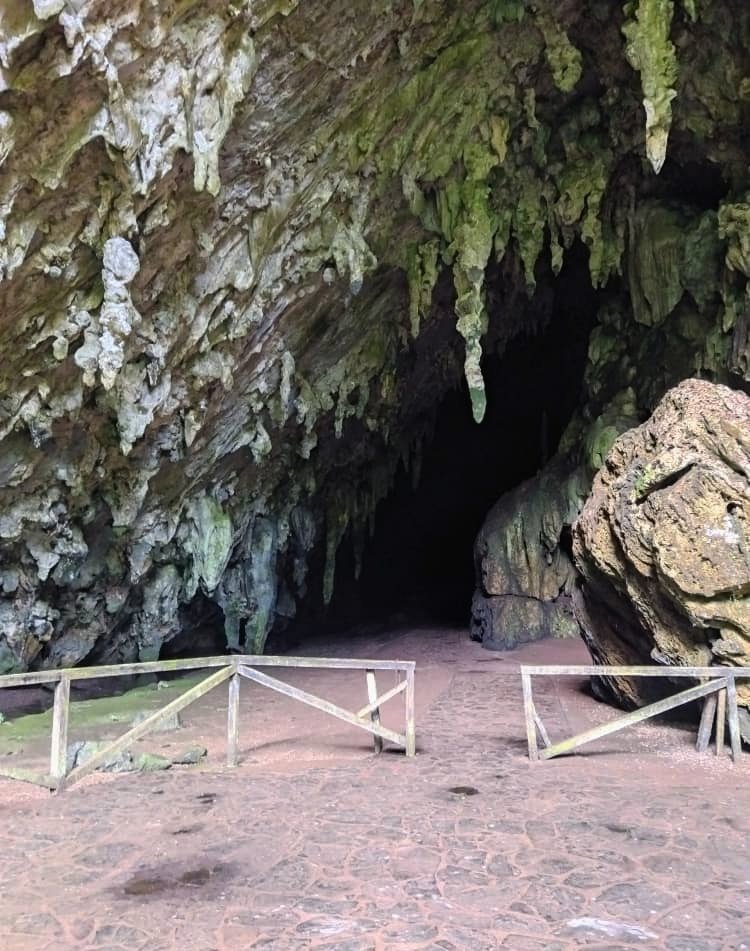

To get to the cave you must pass through the town that bears the name of this bird: El guacharo. You do not enter the town of Caripe, it is much earlier. You can enter this town to go to the cave through Maturin, Monagas State, but there is also an entrance to the site through Sucre State, passing through the town of Santa Maria de Cariaco. From both sides you can access the town of Caripe and of course the Guacharo Cave. It is a mountainous area that reaches a point in the trip that you start to climb and climb until you reach more than 1,000 meters above sea level and many curves in the road, so it is quite an adventure, however the beauty of the site for its mountains, vegetation, cool climate and pleasant variety of landscapes, make the trip a pleasure. When you arrive at El Guacharo National Park you can see the entrance with a large parking lot for vehicles and the welcome sign to the park.
Para llegar a la cueva debes pasar por el pueblo que lleva el nombre de esta ave: El guacharo. No llegas a entrar al pueblo de Caripe, es mucho antes. Puedes entrar a este pueblo para ir a la cueva por Maturin Estado Monagas pero también hay entrada al sitio por el Estado Sucre, pasando el pueblo de Santa María de Cariaco, por ambas partes puedes tener acceso al pueblo de Caripe y por su puesto a la Cueva del Guacharo. Es una zona montañosa que llega un momento del viaje que empiezas a subir y subir hasta llegar a los más de 1.000 metros sobre el nivel del mar y muchas curvas en la vía, así que es toda una aventura, sin embargo la belleza del sitio por sus montañas, vegetación, clima fresco y agradables variedad de paisajes, te hacen el viaje un placer. Cuando llegas al Parque Nacional El Guacharo puedes ver la entrada con un amplio estacionamiento para los vehículos y el letrero de bienvenida al parque.
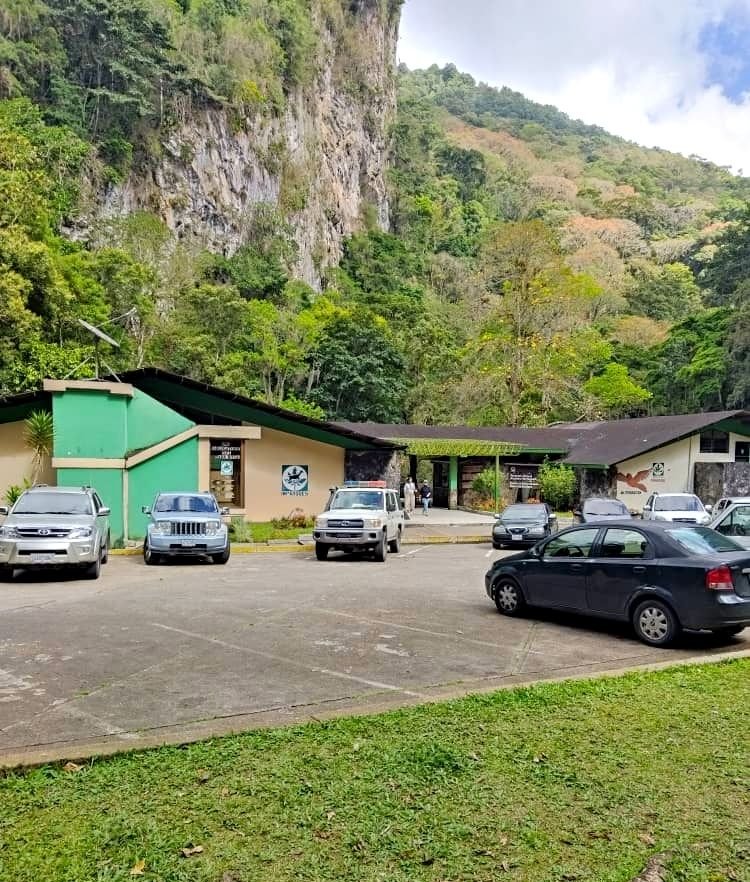
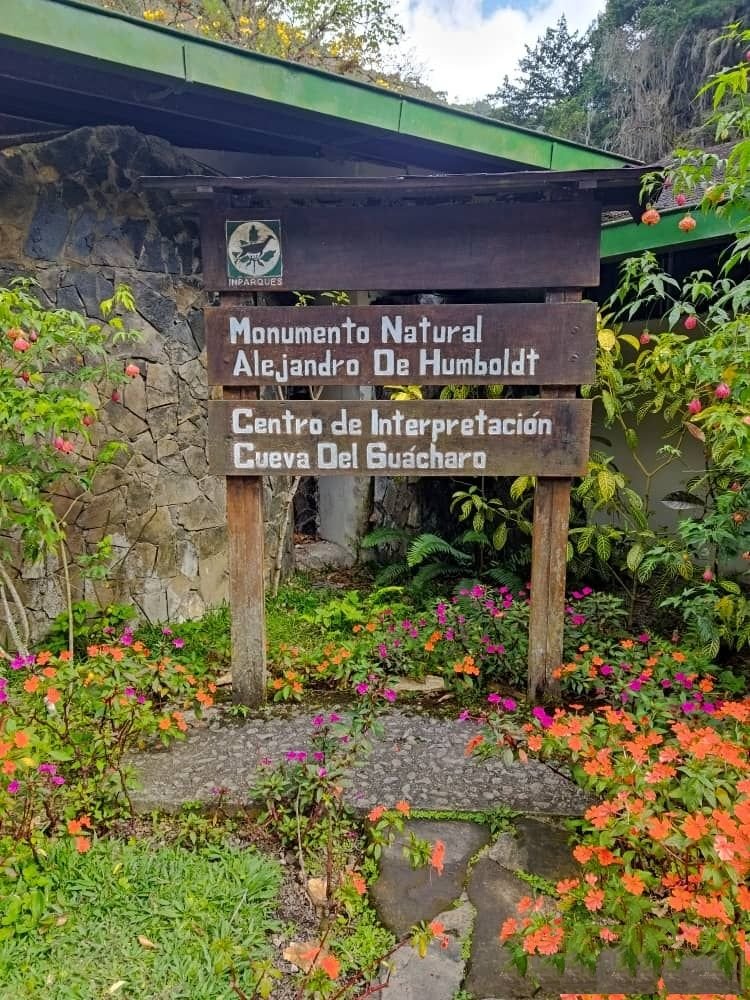
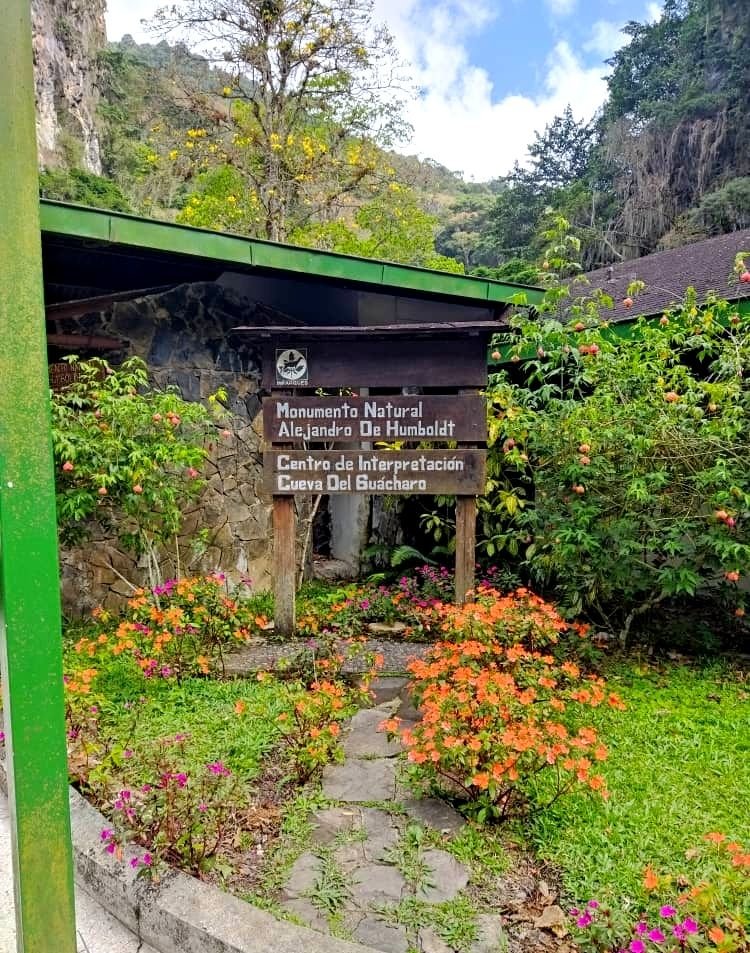
This cave was visited by Alexander von Humboldt on September 18, 1799, a German naturalist, although previously it was constantly visited by the Chaima Indians, who are native to the area, that is why on the entrance sign is the name of Alexander von Humboldt because this is how this cave was known before. It was later declared El Guácharo National Park on May 27, 1975. As soon as you enter the site on the right hand side you get the ticket office where they sell tickets to enter the cave and in that area you meet with other people between 6 and 12 people approximately to make the group that will be together throughout the tour and you are assigned a guide who will make the tour. This tour guide who is well prepared with a diesel lamp and flashlight helps you to observe the path of the entire tour and formations in the stones that the water has formed over the years and that are inside the cave. There the guide tells you among other things that it is forbidden to take pictures with flash, inside the cave because that light bothers the Guacharo bird that is nocturnal and sensitive to light, also tell you that like the bats the guacharo uses echolocation to locate itself in the cave, so it does not collide when flying with another bird or with the walls, less with the people who visit this site. It is amazing what this bird can do. They explain that it is safe to be inside their habitat because they do not go down to the level where people are unless they are chicks that fall from their nests or are injured or sick, otherwise their location is between the formations in the upper part of the cave.
Esta cueva fue visitada por Alexander von Humboldt el 18 de septiembre de 1799 un naturalista alemán, aunque anteriormente ya era visitada constantemente por indígenas de la Etnia Chaima, que son nativos de la zona, por eso en el letrero de entrada está el nombre de Alejandro de Humboldt pues así se conocía antes esta cueva. Luego fue declarado parque nacional El Guácharo el 27 de mayo de 1975. A penas entras al sitio a mano derecha consigues la taquilla donde venden los tickets para poder entrar a la cueva y en esa zona te reúnen con otras personas entre 6 y 12 personas aproximadamente para hacer el grupo que estarán juntos en toda la gira y te asignan un guía que te hará el recorrido. Este guía turístico que está bien preparado con lámpara de combustible diesel y linterna te ayuda a observar el camino de todo el recorrido y formaciones en las piedras que el agua a formado a través de los años y que hay dentro de la cueva. Allí el guía te dice entre otras cosas que está prohibido tomar fotografías con flash, dentro de la cueva pues esa luz molesta al ave Guacharo que es nocturna y sensible a la luz, también te dicen que al igual que los murciélago el guacharo usa la ecolocalización para ubicarse en la cueva, por eso no choca al volar con otra ave o con las paredes,menos con las personas que visitan este sitio. Es increíble lo que está ave puede hacer. Te explican que es seguro estar dentro de su hábitat pues ellas no bajan al nivel donde están las personas a menos que sean pichones que caigan de sus nidos o que estén heridas o enfermas, del resto su ubicación es entre las formaciones en la parte alta de la cueva.
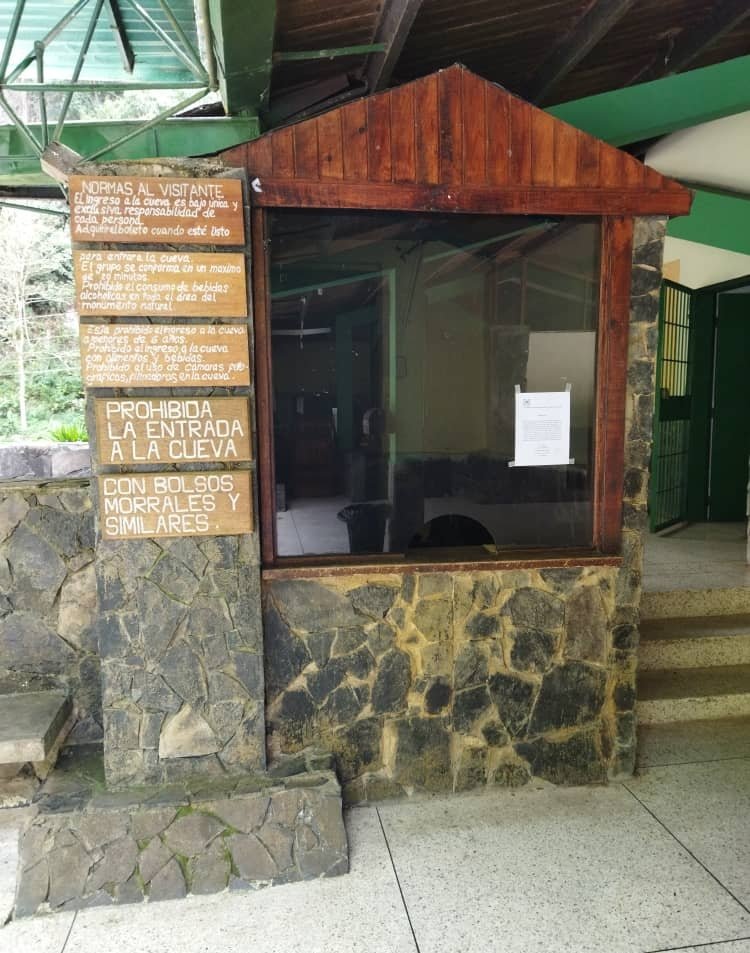
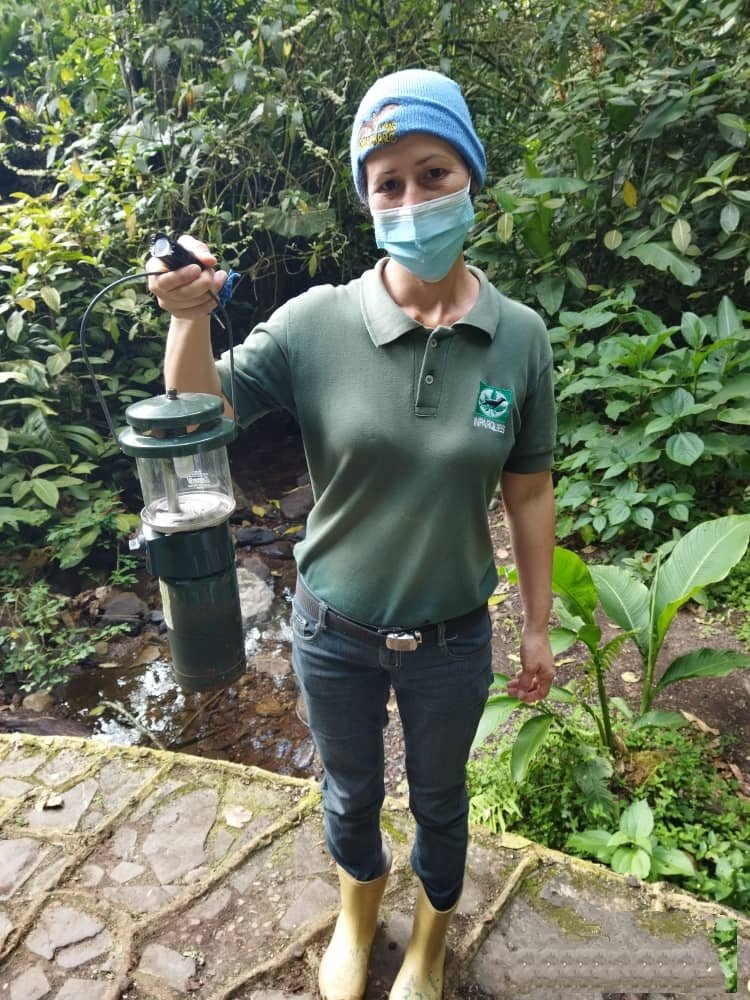
After the place where they sell entrance tickets to the cave if you turn to the left hand side is the Humboldt Museum, where you will find specimens of some animals of the national park including the guacharo, also some objects for lighting inside the cave and a new subspecies of butterfly recently discovered in 2020. There you can pass by and observe what has been discovered over time not only inside the cave but also in the entire national park, which is large because it is made up of two separate units or blocks: Cerro Negro, where the Cueva del Guácharo is located, and the Middle Basin of the Caripe River. In total, the park covers 62,700 hectares. After the museum there is a small restaurant that offers breakfast and lunch, but it has not offered its services for some time, especially during the pandemic, and it is still not functioning.
Luego del sitio dónde venden los tickets de entrada a la cueva si volteas a mano izquierda está el Museo Humboldt, donde encontrarás ejemplares de algunos animales del parque nacional incluyendo el guacharo, también de algunos objetos para alumbrar dentro de la cueva y una nueva subespecie de Mariposa recién descubierta en el año 2020. Allí puedes pasar y observar lo que a través del tiempo se ha descubierto no solo dentro de la cueva sino también en todo el parque nacional que es grande pues está conformado por dos unidades o bloques separados: el de Cerro Negro, donde se ubica la Cueva del Guácharo, y el de la Cuenca Media del río Caripe, en total el Parque abarca 62.700 hectáreas. Luego después del museo hay un pequeño restaurant para ofrecer desayunos y almuerzos, que por cierto tiene algún tiempo sin ofrecer sus servicios sobre todo durante la pandemia y aún no está funcionando.
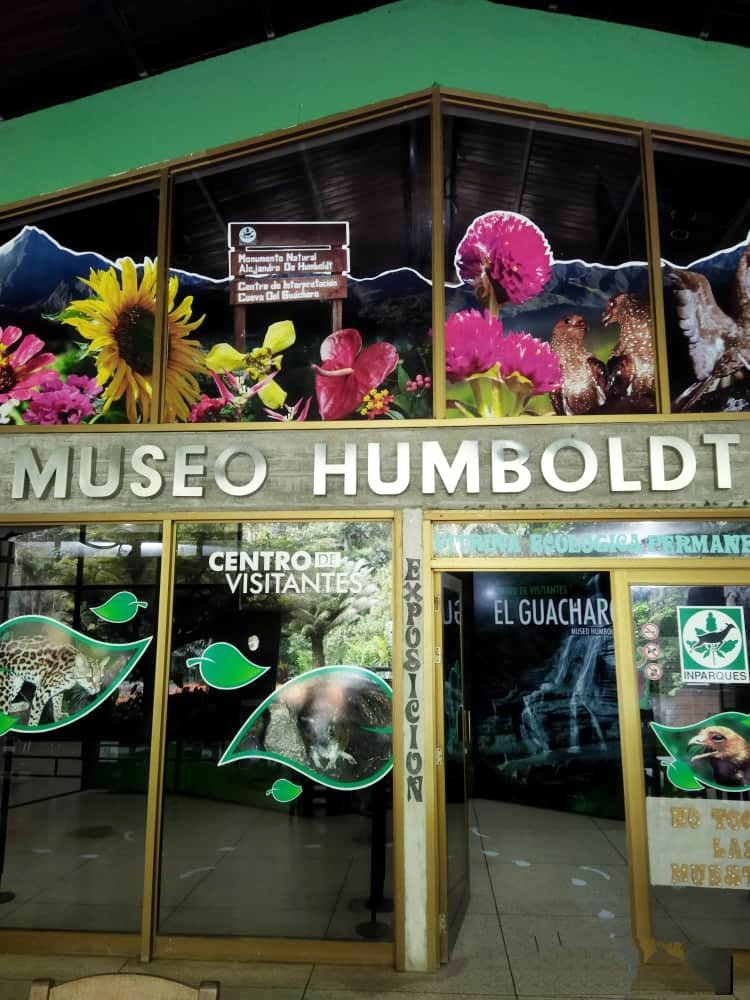
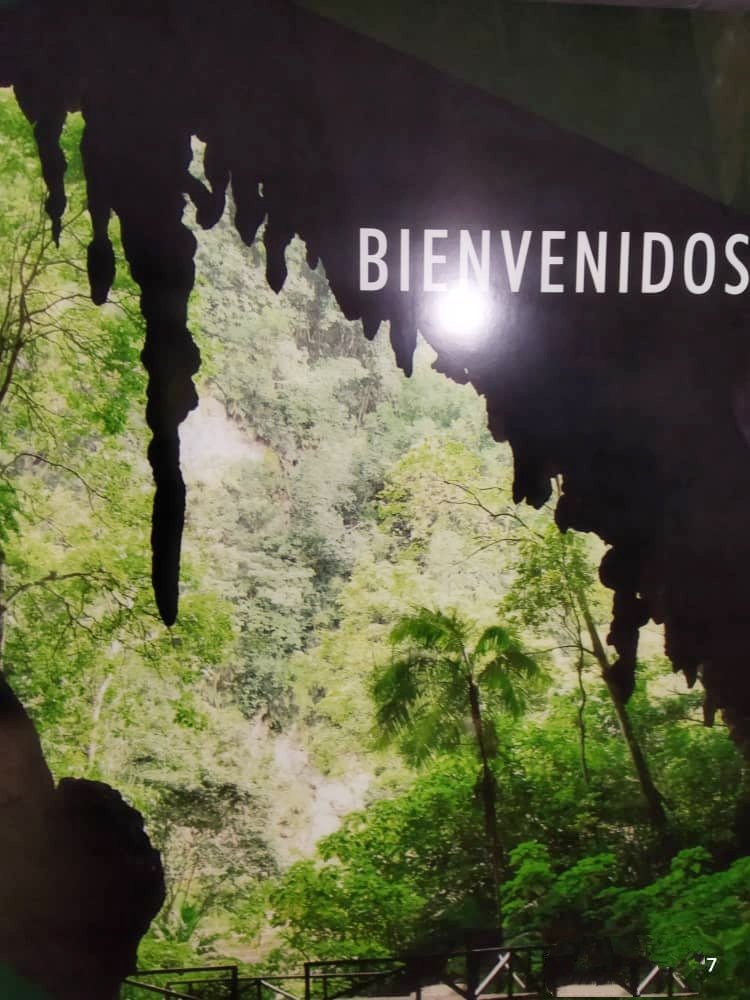
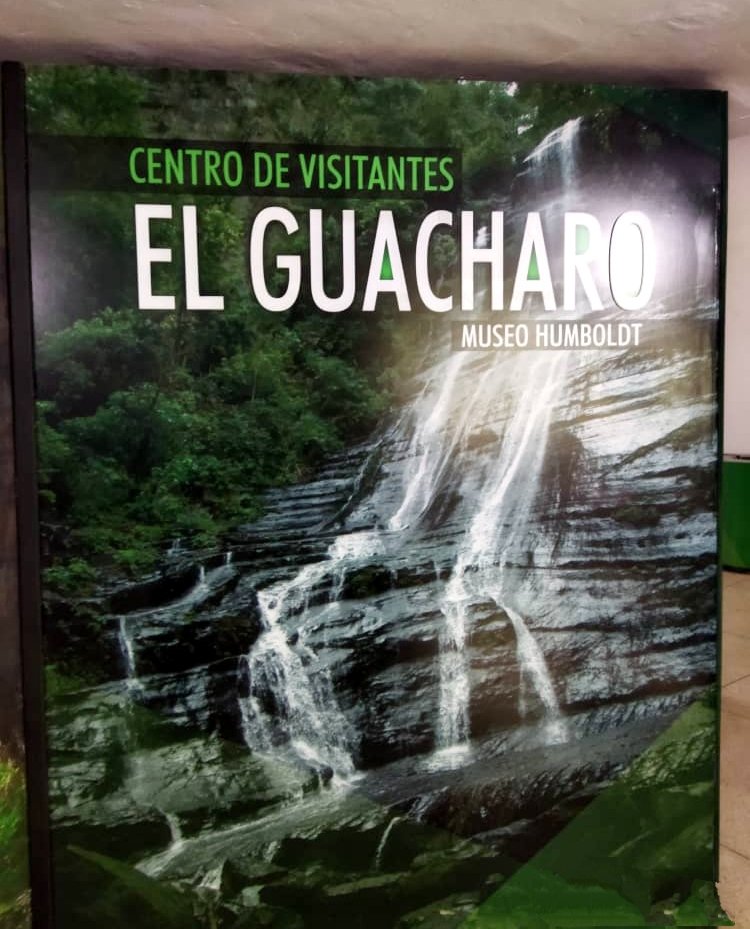
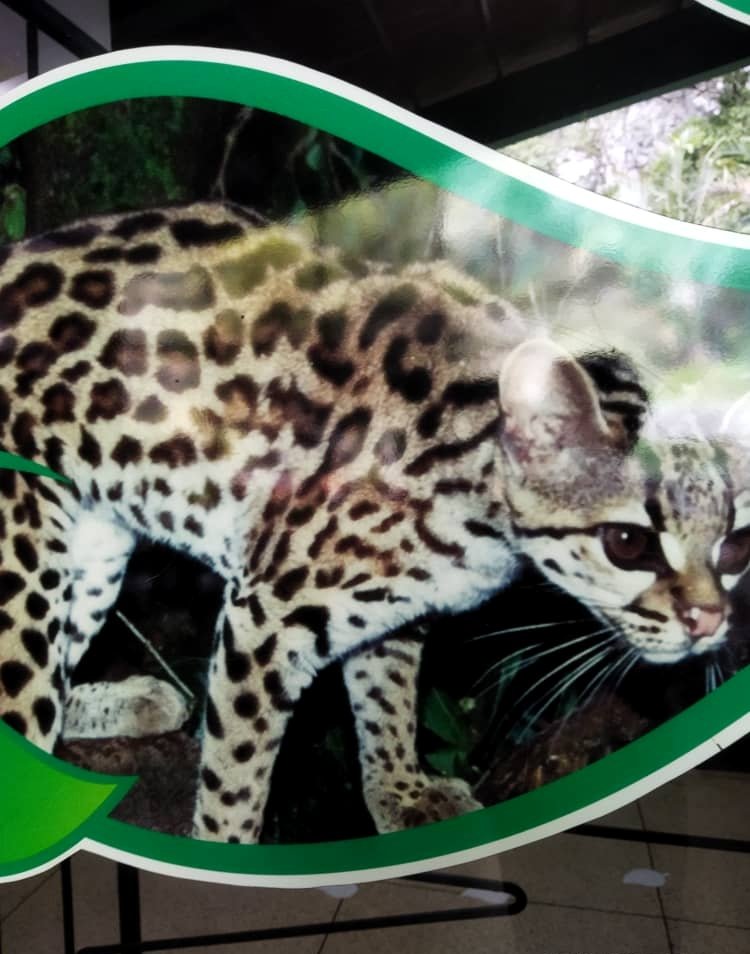
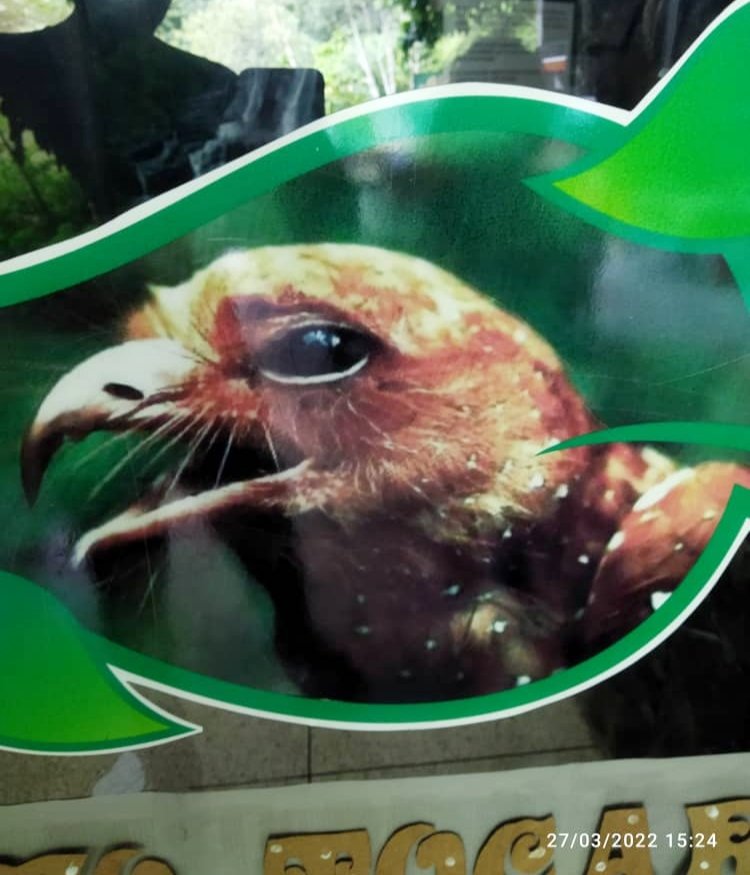

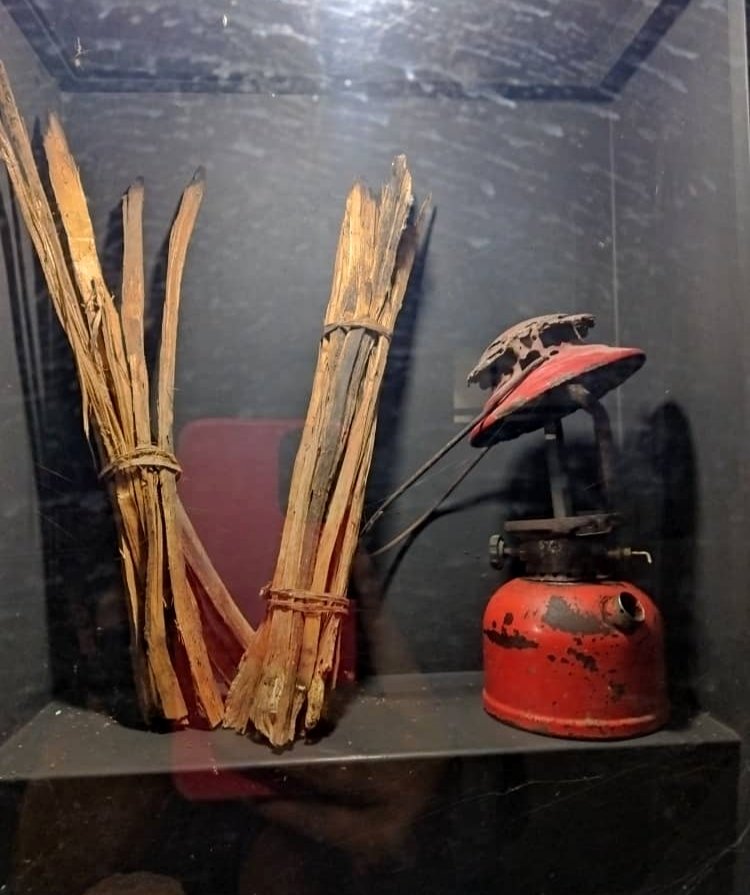

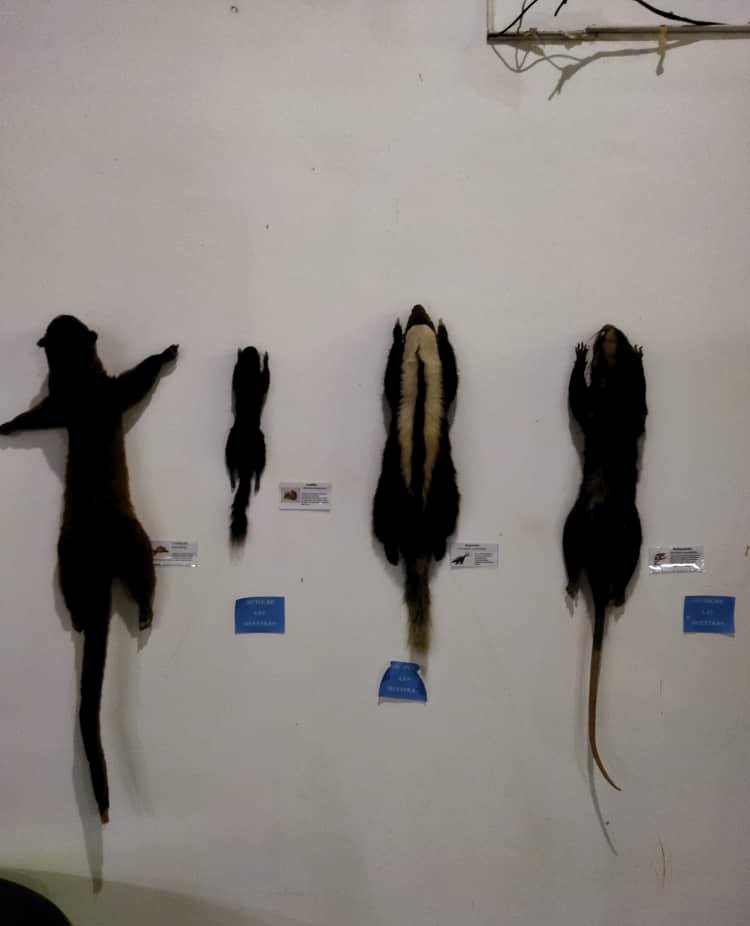
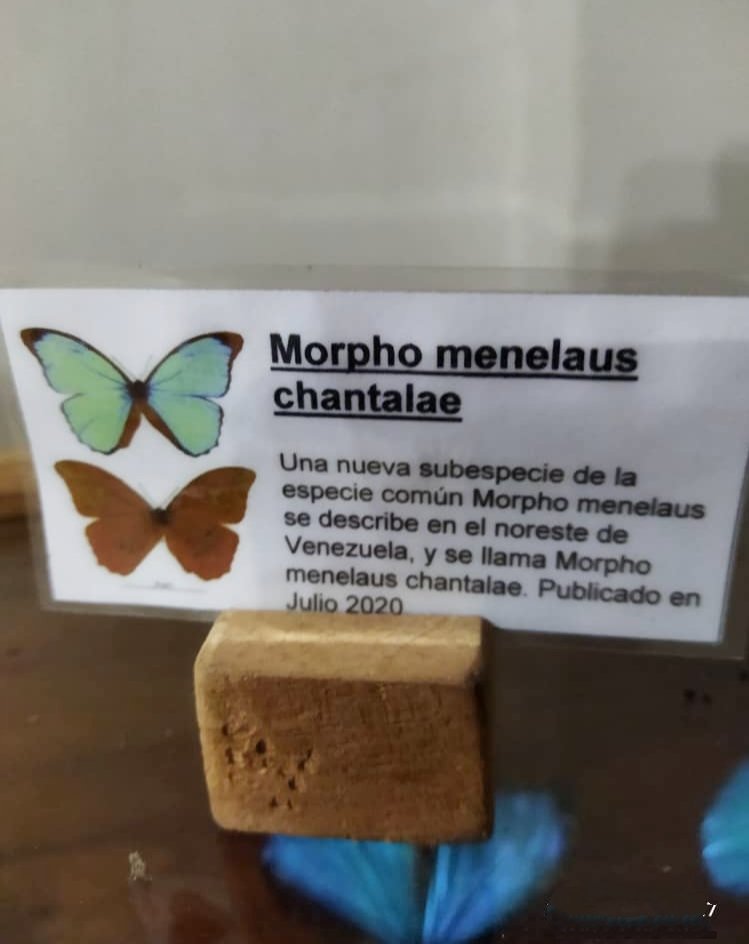
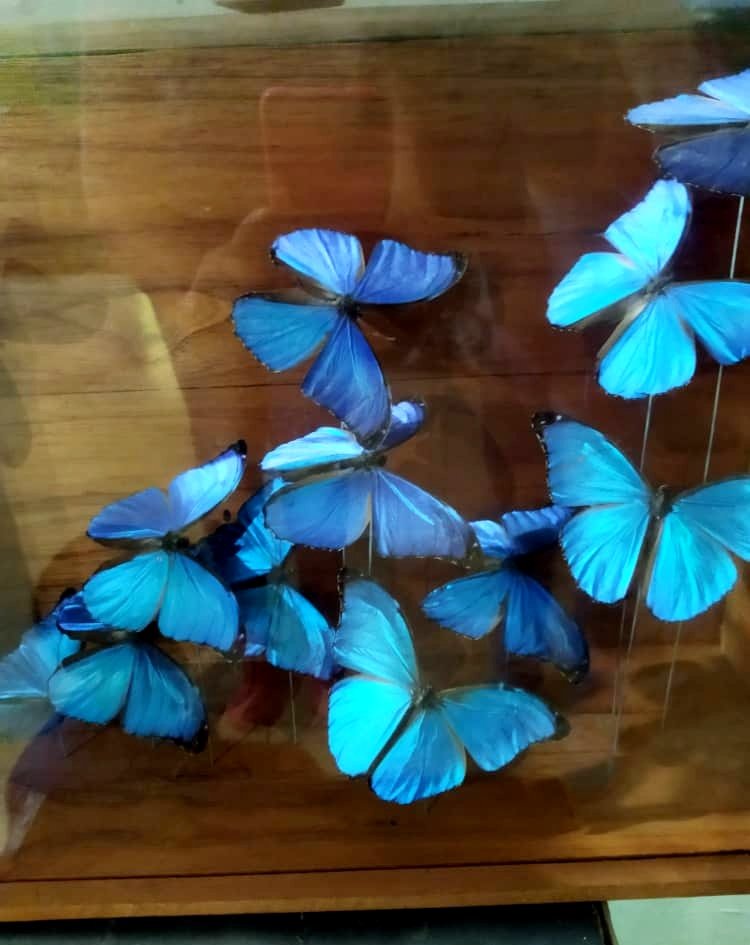
When you continue walking you find on the right side a few large steps made of stones and cement where in the center is a monument to Alexander Humboldt with a plaque that shows some data about his discovery of this cave of the guacharo.
Cuando sigues caminando encuentras del lado derecho unos cuantos escalones grandes hechos de piedras y cemento dónde en todo el centro está un monumento de Alejandro Humboldt con una placa que muestra algunos datos sobre su hallazgo de descubrir esta cueva del guacharo.
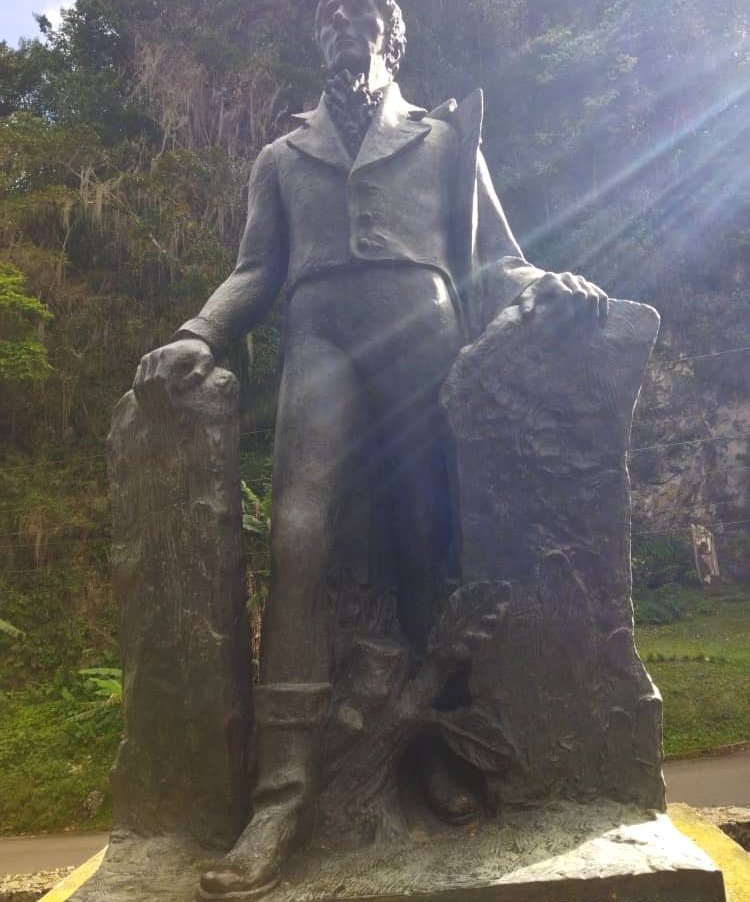
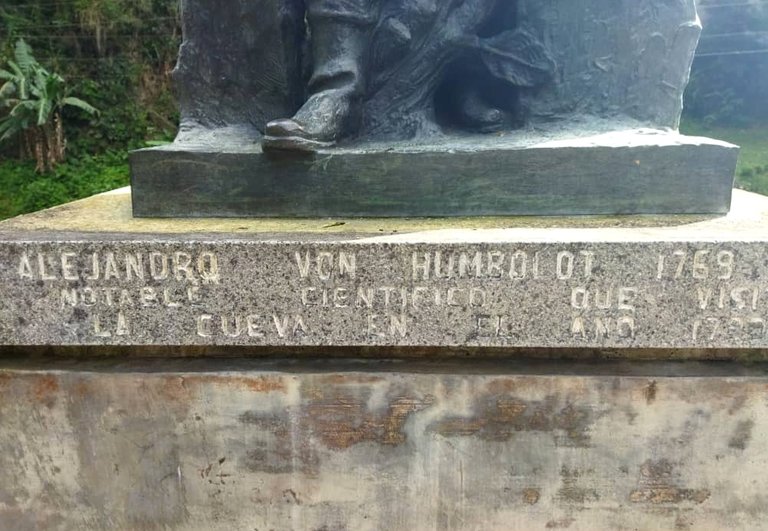
And on the left side just in front of the Humboldt monument is the huge entrance to the guacharo cave, where before reaching it you can cross a small bridge over the Caripe river, which now as you can see is short of water, but in winter it is plentiful, but its waters are cold and there some visitors bathe if they are able to withstand those water temperatures, hahaha. This river is also used by almost all visitors because on its banks they wash all the mud that they can bring in their shoes after leaving the tour of the cave. At the entrance you can see some stalactites and stalagmites that are formations of stones that grow from bottom to top or vice versa with peculiar shapes. You can also see other formations and trails made to guide those who enter the cave, I tell you that in the time of my childhood when I had to accompany visitors who came to my house, there were no such paths made of cement and stones, everything was mud, from entering to leaving, it was slippery, so the adventure was more exciting but dangerous because of the falls that could occur and that happened many times. Inside the cave there is also a small creek where some small fish live, which in winter time increases in volume. The guides also say that there are areas of the cave that only experienced hikers go through, where you go submerged in water up to your neck and other areas are cliffs that can only be crossed with ropes and greater security, for this type of excursion you must get a special permit. In the following photos you can see the entrance and what is described, including a photo inside the cave, but only a few meters away where you can still see the light from the entrance, this photo is from the inside out.
Y del lado izquierdo justo frente al monumento de Humboldt está la enorme entrada de la cueva del guacharo, dónde antes de llegar a ella se puede cruzar a través de un pequeño puente el río Caripe, que ahorita como lo ven está escaso de agua, pero en invierno es caudaloso,eso sí sus aguas son frías y allí algunos visitantes se bañan si son capaces de aguantar esas temperaturas del agua, jajaja. También ese río es usado por casi todos los visitantes pues a sus orillas se lavan todo el barro que puedan traer en sus zapatos después de salir del recorrido de la cueva. Ya en la entrada se puede observar algunas estalactitas y estalagmitas que son formaciones de piedras que crecen de abajo hacia arriba o viceversa con unas formas peculiares. También se pueden ver otras formaciones y los senderos hechos para guiar a los que entran a la cueva, les cuento que en los tiempo de mi niñez en que me tocaba acompañar a los visitantes que llegaban a mi casa, no existían estos senderos de cemento y piedras hechos, todo era lodo, desde que se entraba hasta salir, era resbaloso por demás, así que la aventura era más emocionante aunque peligrosa por las caídas que podían ocurrir y que ocurrieron muchas veces. Dentro de la cueva también atraviesa un pequeño riachuelo donde habitan algunos peces pequeños, que en tiempos de invierno crece más en caudal. También dicen los guías que hay zonas de la cueva que solo van excursionistas experimentados, donde se recorre sumergidos en el agua hasta el cuello y otras zonas son precipicios que solo se atraviesan con cuerdas y mayor seguridad, para este tipo de excursión se debe sacar un permiso especial. En las siguientes fotos se ven la entrada y lo descrito, incluso una foto adentro de la cueva,pero a solo unos metros dónde aún se ve la luz de la entrada, esta foto es de adentro hacia afuera.
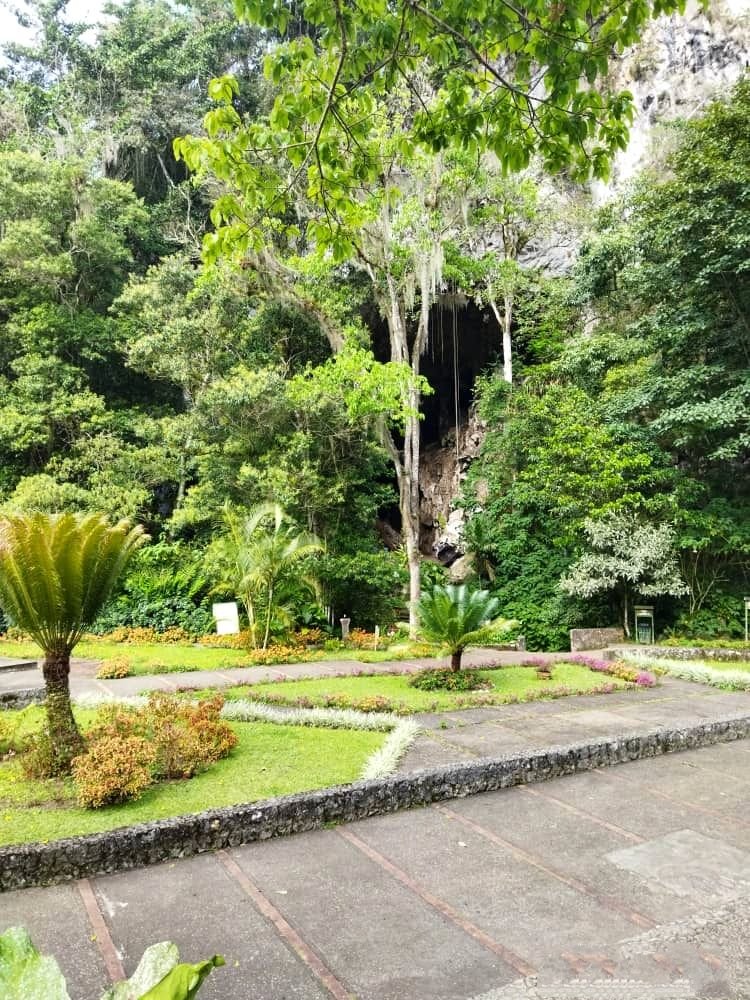
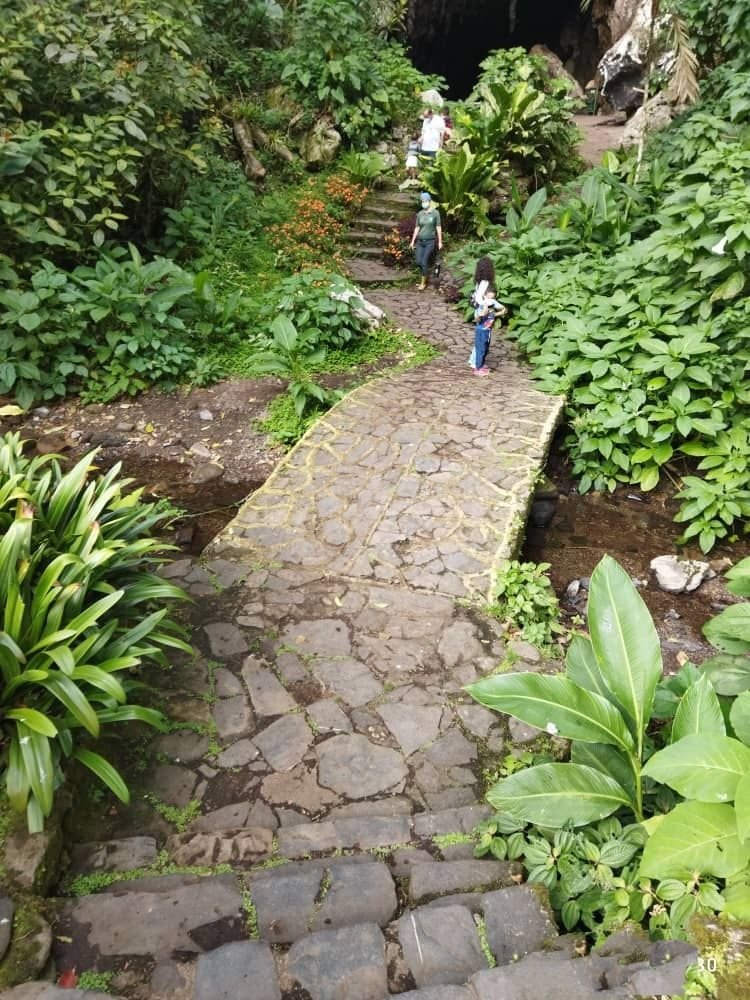
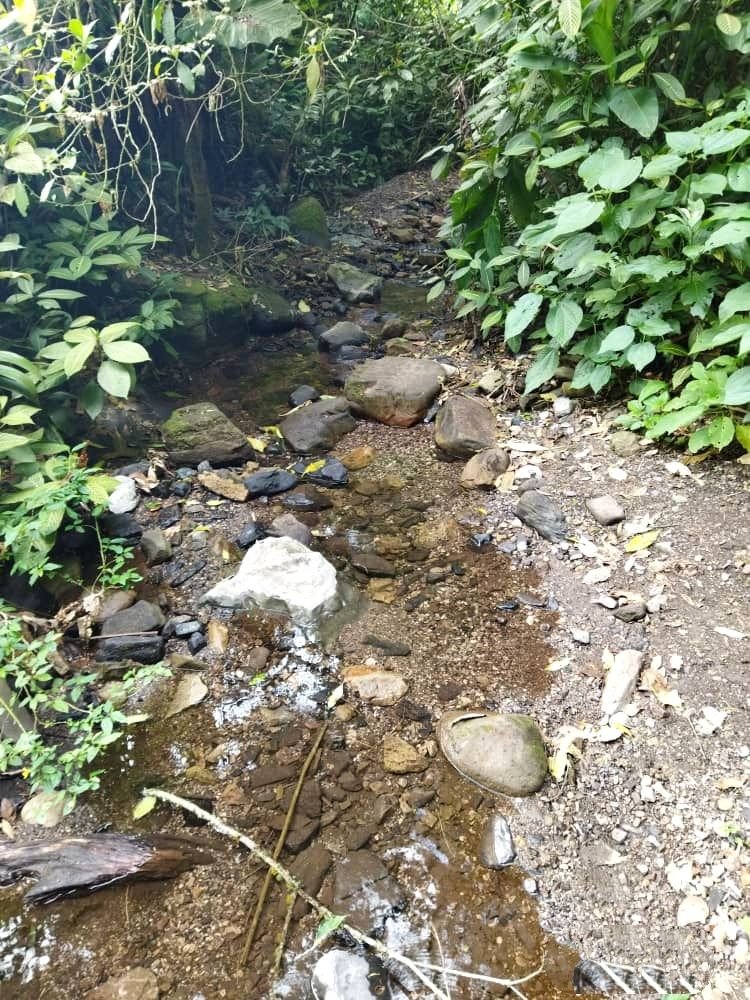
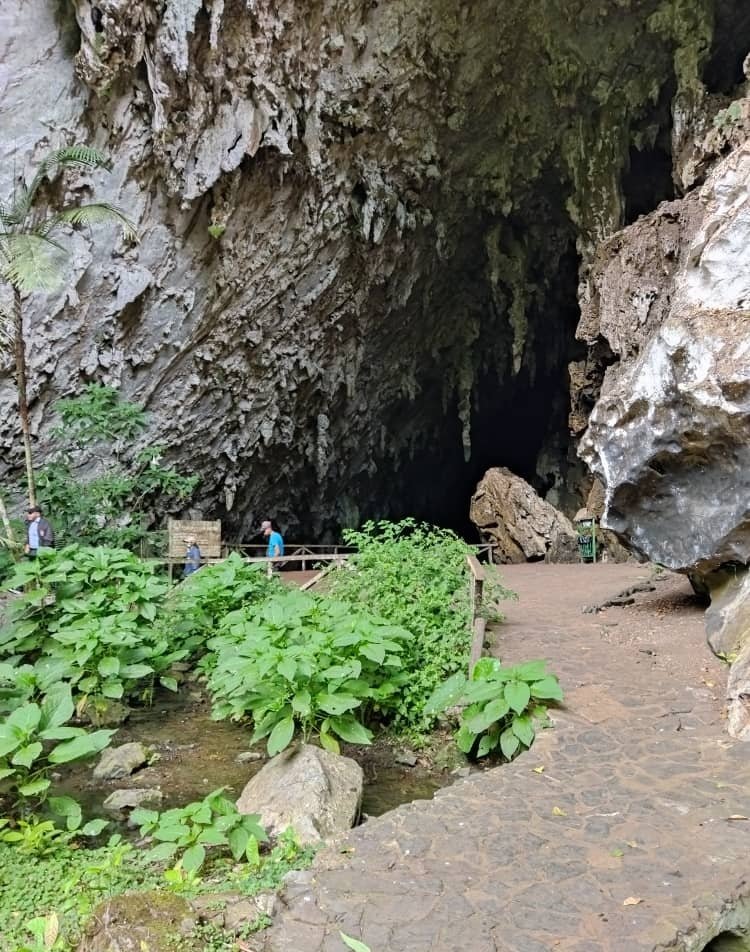
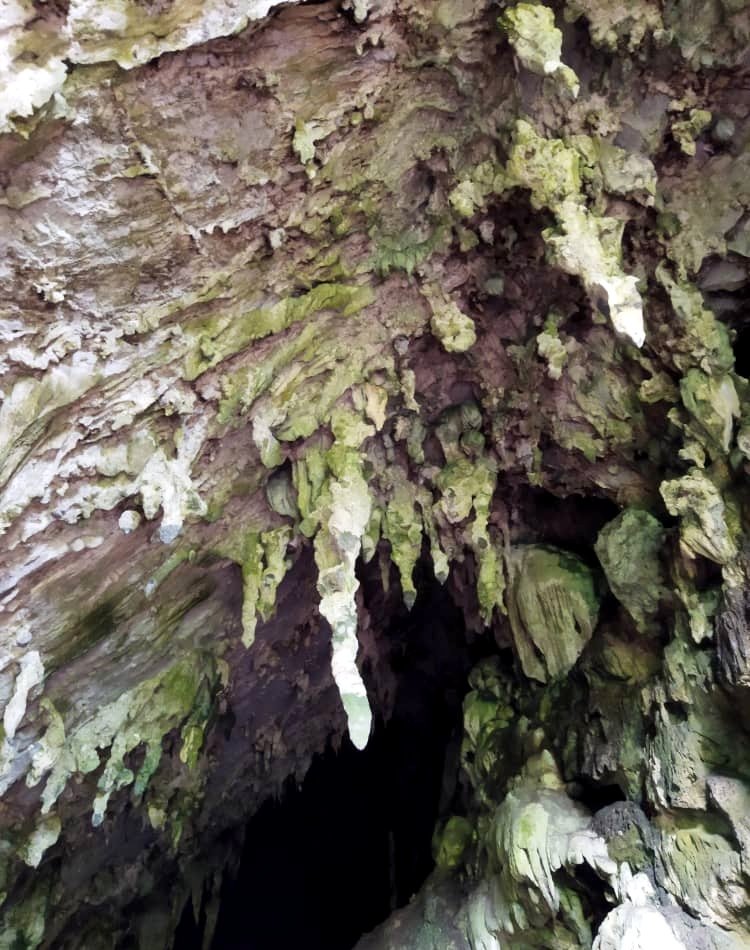
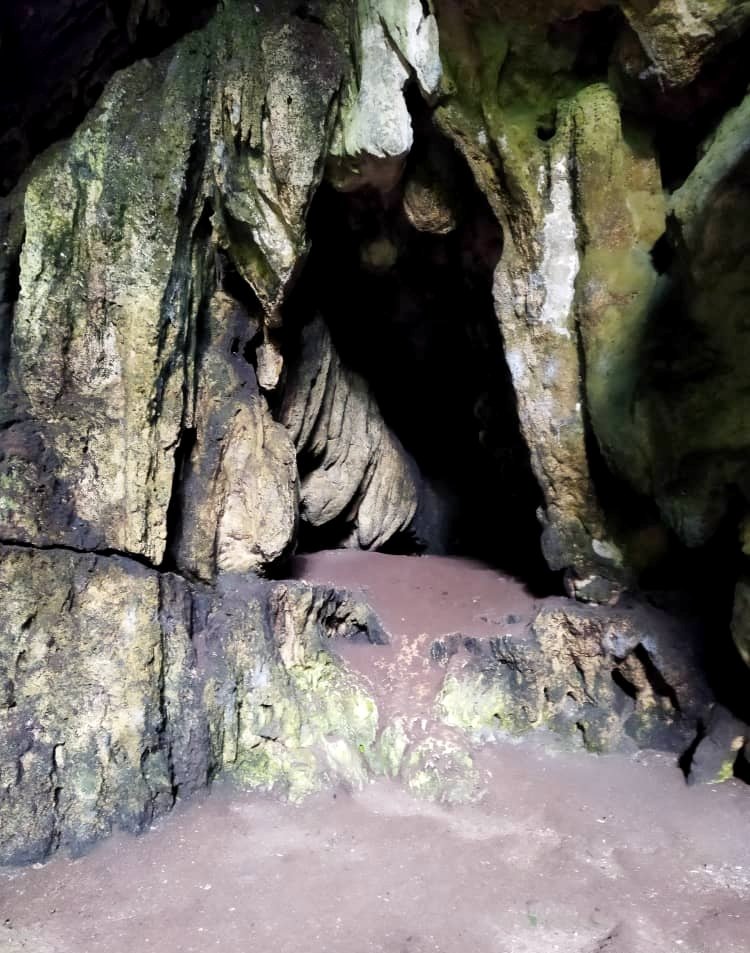
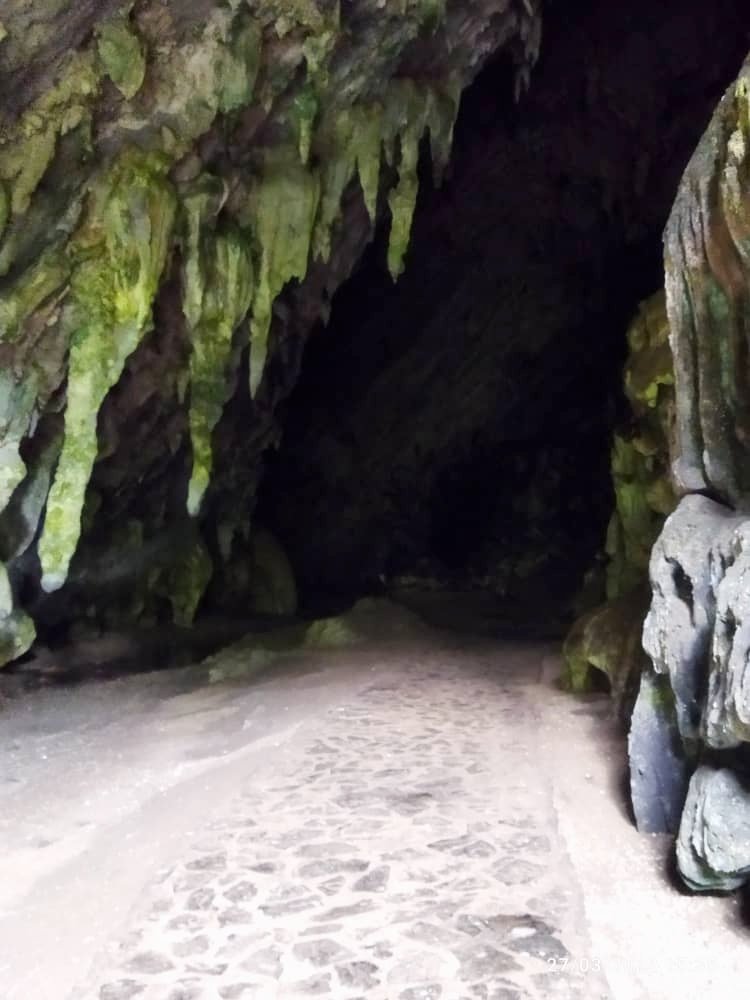
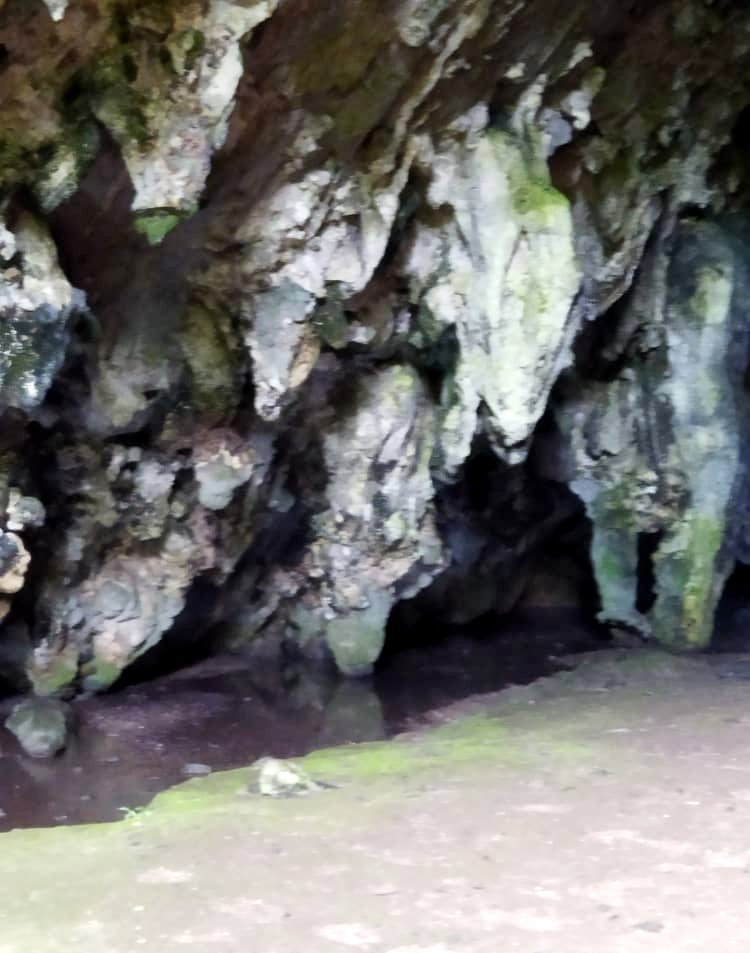
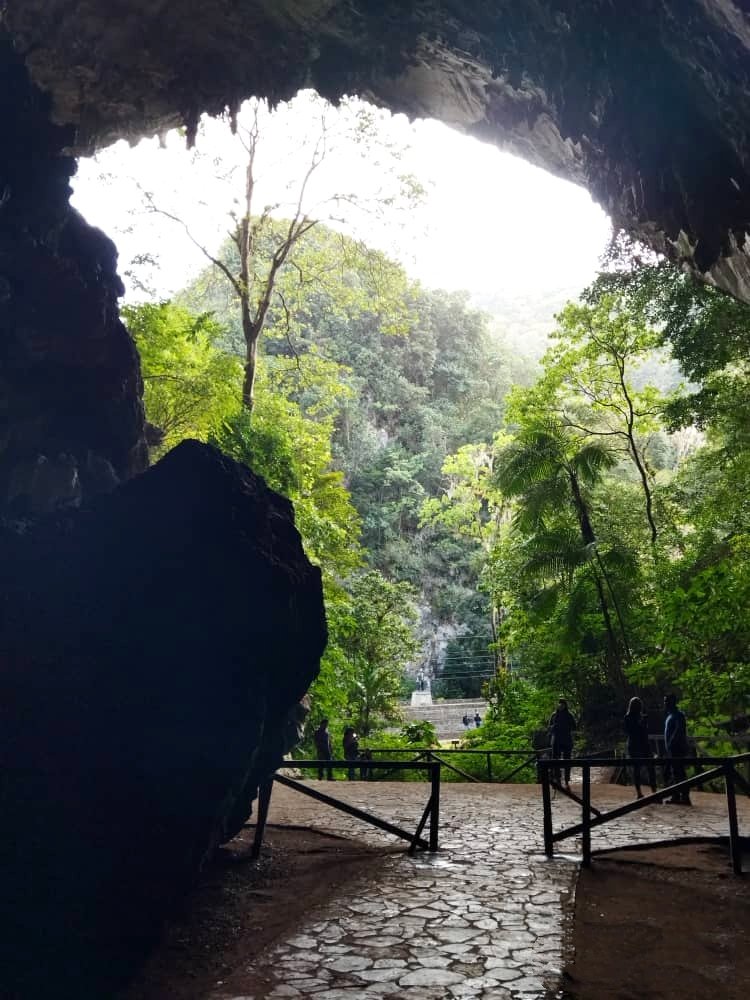
Once you are inside the cave you can feel the guacharos fluttering and with their particular screeching, you can only feel them but you can not see them because it is very dark and they are in the upper part, sometimes the tour guides manage to light some and you can barely see them, otherwise you can only get a complete picture of what this bird is like when you visit the museum and observe the specimen that they have there stuffed. The bird is about the size of a chicken, with brown and white feathers, and has a beak with long whiskers that help it visualize where it flies without hitting walls or objects in front of it. I have also been able to see them starting at dusk if you pass by that road, because it is the time for them to go out to look for food... yes they go out daily for their food outside the cave and at that time it is a spectacle, it is also an event awaited by many visitors who come at dusk to wait for the "departure of the guacharos". Tourists sit on the large stairs of the Humboldt monument, with their coats and some snacks, waiting for the birds to come out and with their cameras turned on in the hope of taking a picture in the dark, something not very possible. The guacharos come out in numbers at the same time, it is impressive to feel their flights nearby and their chattering, they go to the nearby mountains to eat some fruits of their liking and return to the cave before dawn, as they are sensitive to light. Speaking of sensitivity to light, it is sad to see sometimes on the road some specimens of Guacharos dead because they fly close and the light of the cars make them lose visibility and hit the glass or another part of the car then fall on the road, they die, so drivers are asked that in that area of the cave the intensity of the lights of their vehicles is the lowest possible, in order to preserve this bird so appreciated. At the exit of the tour inside the cave you can find small stalls on the left hand side at the end of the entrance area, with merchants selling local handicrafts, sweets and other souvenirs to take home as souvenirs or gifts. There are key chains made from the seeds of the fruit that the guacharo drops to the floor of the cave after it has eaten it. Others are made with seashells imitating the guacharo bird. And not to mention the sweets, chocolates, cookies, cakes and other delicious things that with the cold and the walk made, you devour, hahaha, that's the part I liked the most and I still like the ride.
Una vez estás dentro de la cueva se sienten revoloteando los guacharos y con su chillido particular, solo se sienten más no se pueden ver pues es muy oscuro y están en la parte de arriba, a veces los guías turísticos logran alumbrar algunos y se ven a penas, de lo contrario solo se puedes hacerte una imagen completa de cómo es esta ave cuando visitas el museo y observas el ejemplar que tienen allí disecado. El ave tiene un tamaño parecido al de una gallina, de plumas color marrón con blanco, y tiene un pico con bigotes largos que le ayudan a visualizar por dónde vuela sin chocar con las paredes u objetos que tenga enfrente. También he podido verlos empezando a anochecer si pasas por esa carretera, pues es la hora de ellos salir a buscar comida... sí ellos salen a diario por su comida afuera de la cueva y llegado ese momento es un espectáculo, también es un evento esperado por muchos visitantes que se acercan a las horas del atardecer a esperar la"salida de los guacharos". Los turistas se sientan dónde están las grandes escaleras del monumento a Humboldt, con sus abrigos y algunos snacks a esperar que salgan estas aves y con sus cámaras encendidas con la esperanza de tomar alguna foto a oscuras, algo poco posible. Los guacharos salen en cantidades a la vez, es impresionante sentir sus vuelos cerca y sus algarabías, ellos van a las montañas cercanas a comer de algunos frutos de su agrado y vuelven a la cueva antes del amanecer,pues son sensibles a la luz. Hablando de sensibilidad a la luz, es triste ver a veces en la carretera algunos ejemplares de Guacharos muertos porque vuelan cerca y la luz de los carros hacen que pierdan la visibilidad y choquen contra el vidrio u otra parte del carro luego caen en la vía, mueren, por eso a los conductores se les pide que en esa zona de la cueva la intensidad de las luces de sus vehículos sea la menor posible, para poder conservar a esta ave tan apreciada. Ya a la salida del recorrido dentro de la cueva puedes conseguir a mano izquierda hacia el final del área de la entrada, unos pequeños puestos de comerciantes que venden artesanías propias del sitio, también dulces y otros souvenirs para llevar de recuerdos o de regalos. Hay llaveros hechos con la semillas del fruto que deja caer el guacharo al piso de la cueva, después que lo ha comido. Otros hechos con conchas de mar imitando al ave guacharo. Y de dulces ni hablar, chocolates, galletas, tortas y demás cosas deliciosas que con el frío y la caminata hecha provocan devorar, jajaja, esa es la parte que más me gustaba y me sigue gustando del paseo.
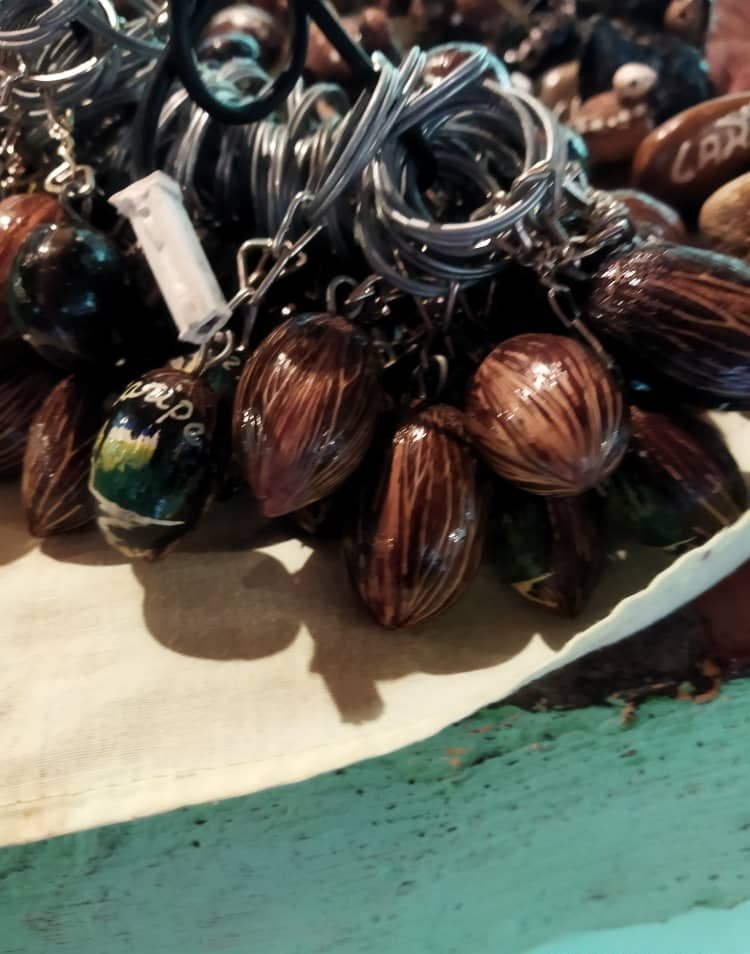
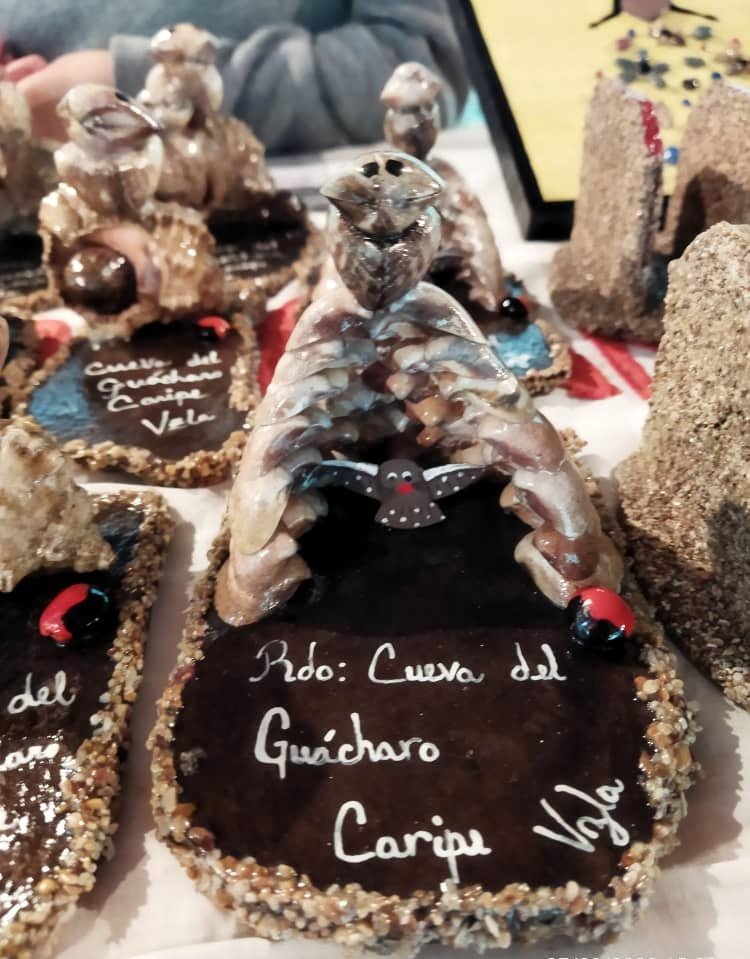
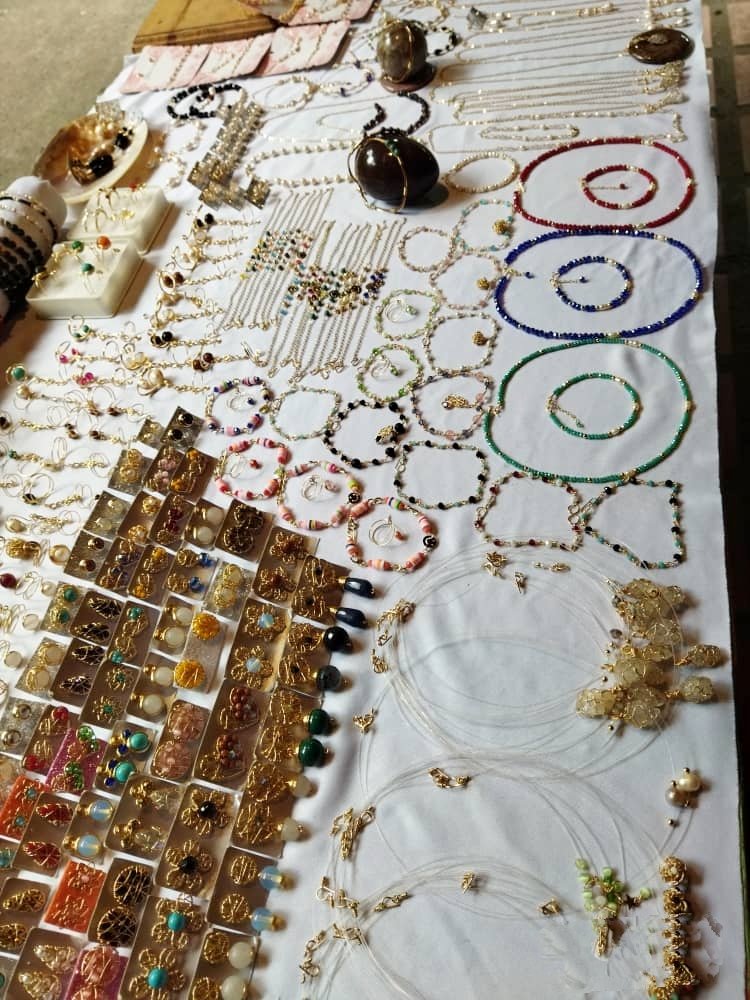
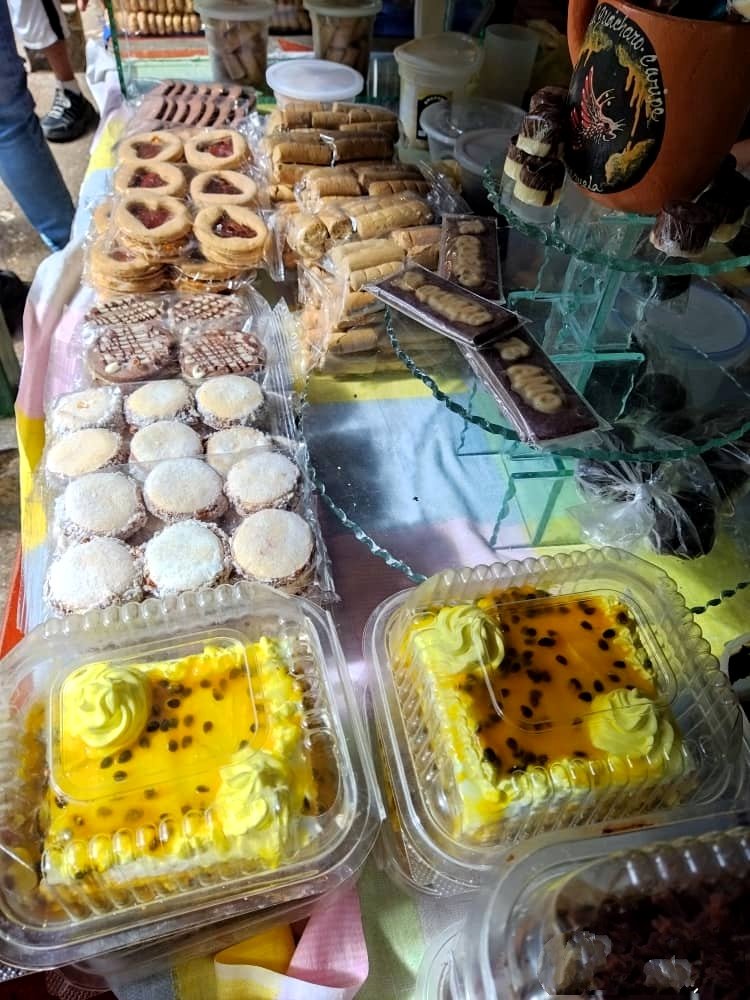

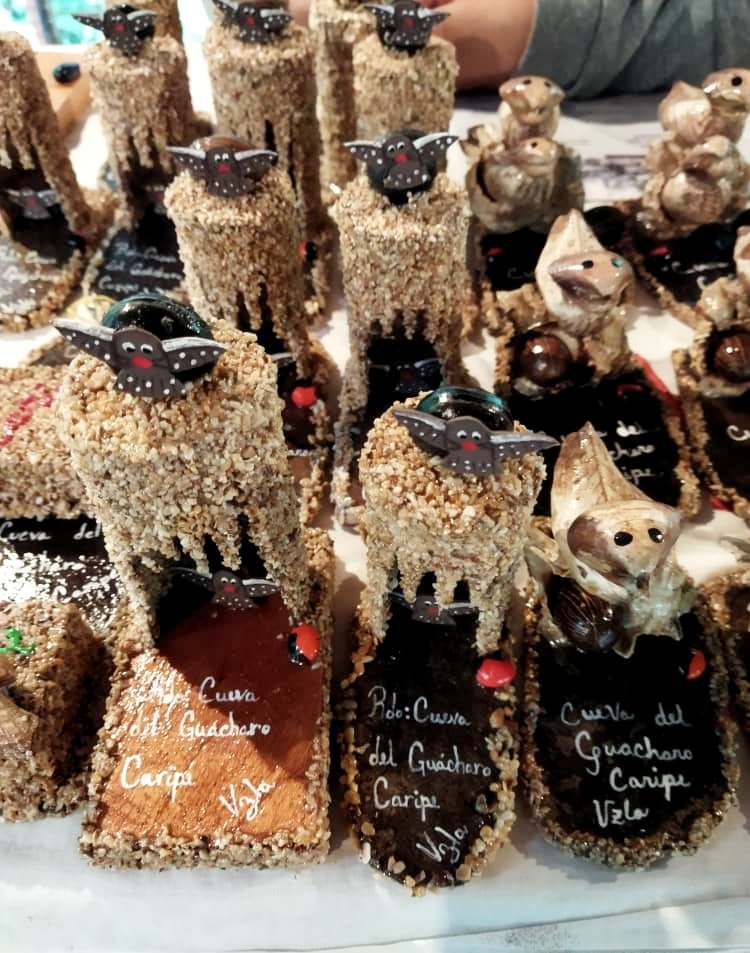
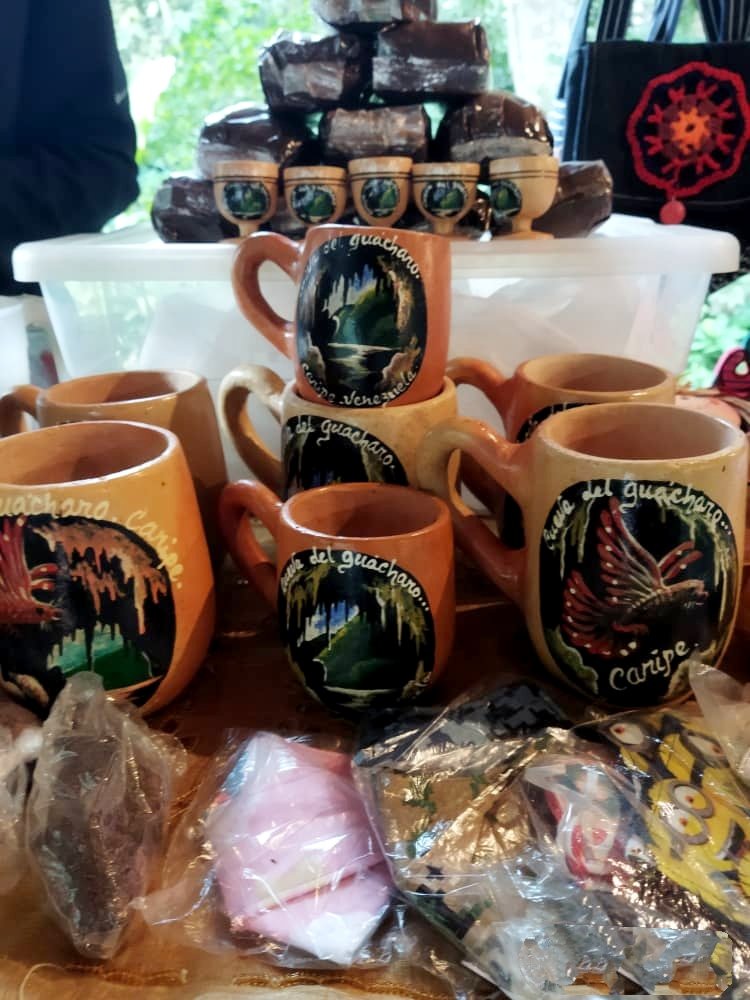
When you get back to the road in front of the entrance to the cave facilities, there is a place called "la paila". It is a spectacular waterfall that falls into a hole that resembles a large pool, to get there you must walk a few kilometers along paths made of cement and stones, but surely this will be the subject of another article, this is another tourist attraction in the area. You can also see how in the surroundings of these trails there are adult and productive coffee plants, you can even see that they have several ready to be planted.
Al salir de nuevo a la carretera en todo el frente de la entrada a las instalaciones de la cueva, hay un sitio que se llama:"la paila". Es una caída de agua espectacular que cae en un hueco parecido a una gran paila, para llegar a ella se deben caminar unos cuantos kilómetros por senderos hechos de cemento y piedras, pero de seguro éste será tema de otro artículo, este es otro atractivo turístico de la zona. También se puede ver cómo a los alrededores de esos senderos hay plantas de café adultas y productivas, incluso se ve que tienen varias ya listas para ser sembradas.
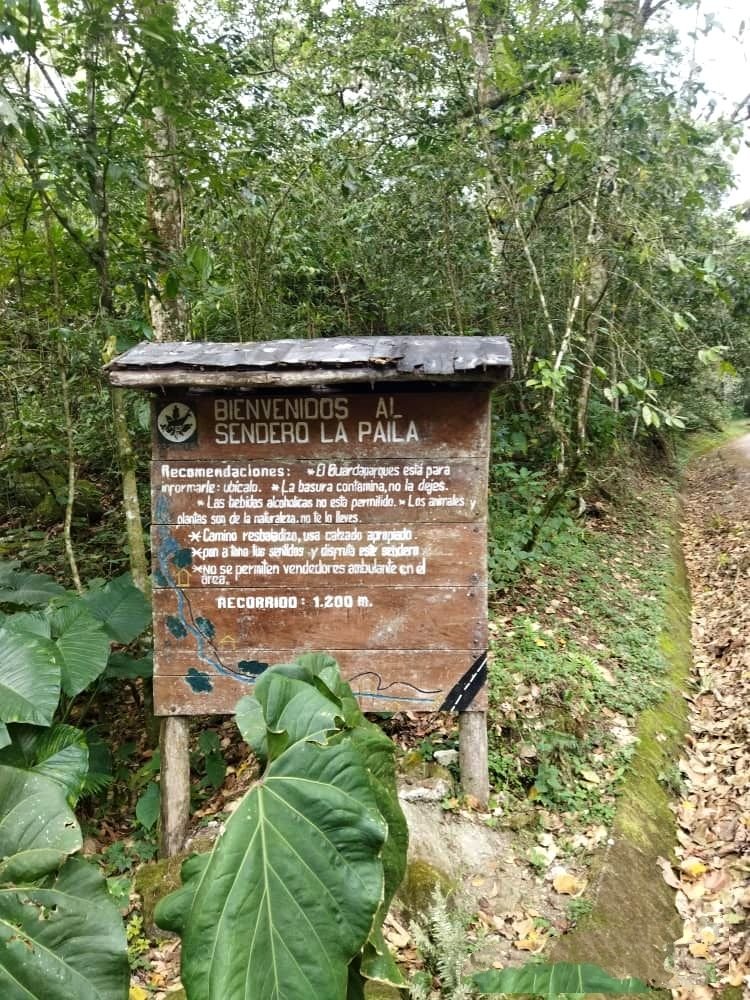
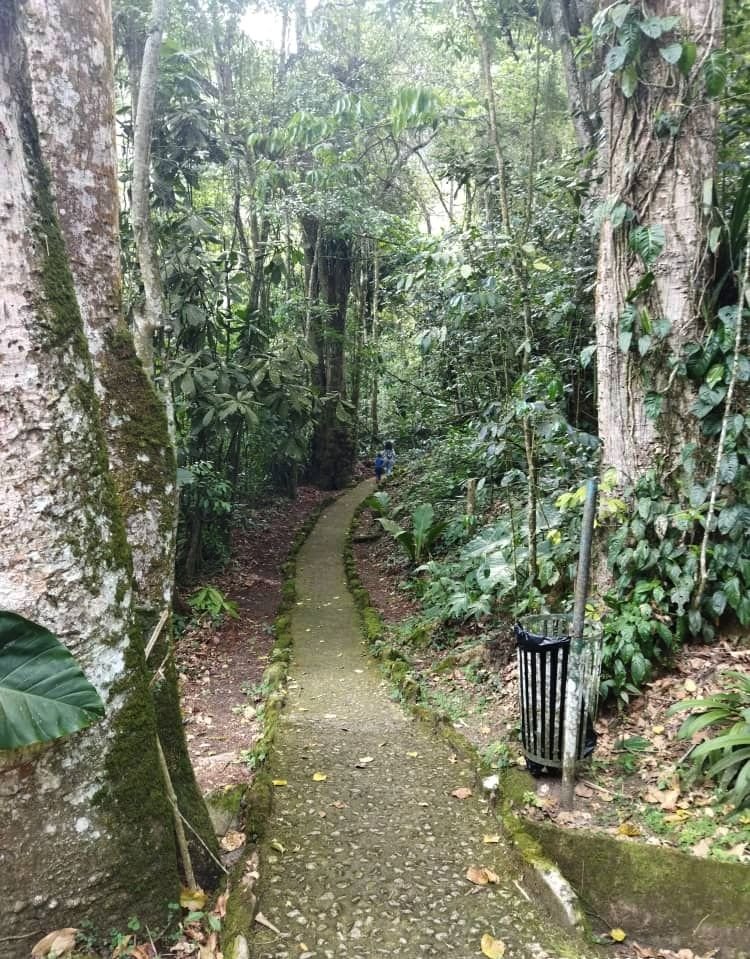
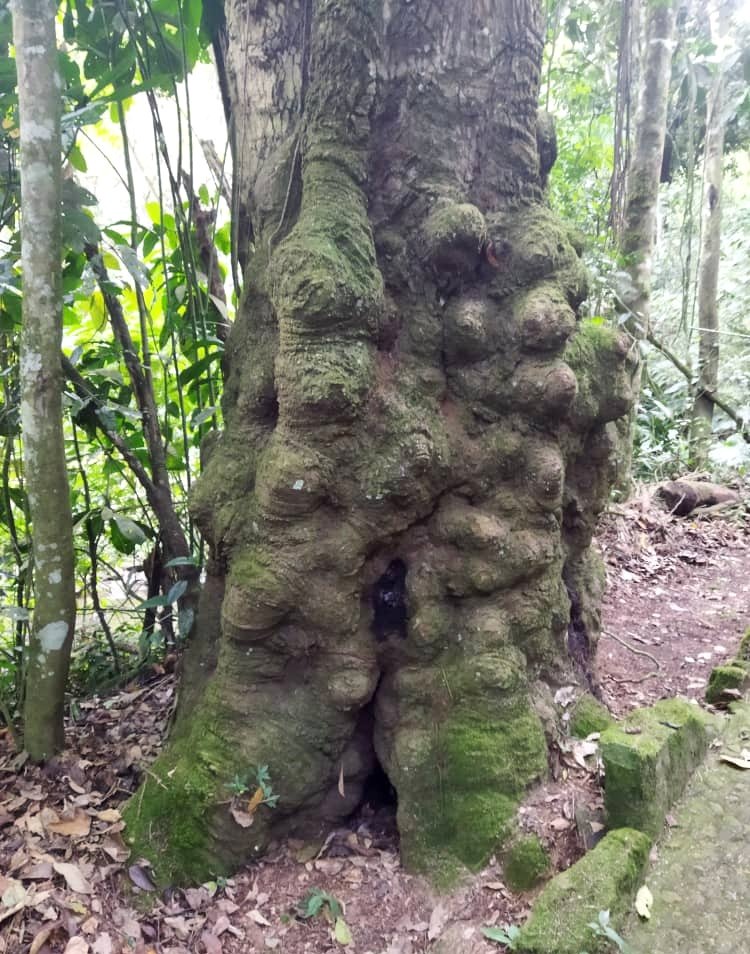
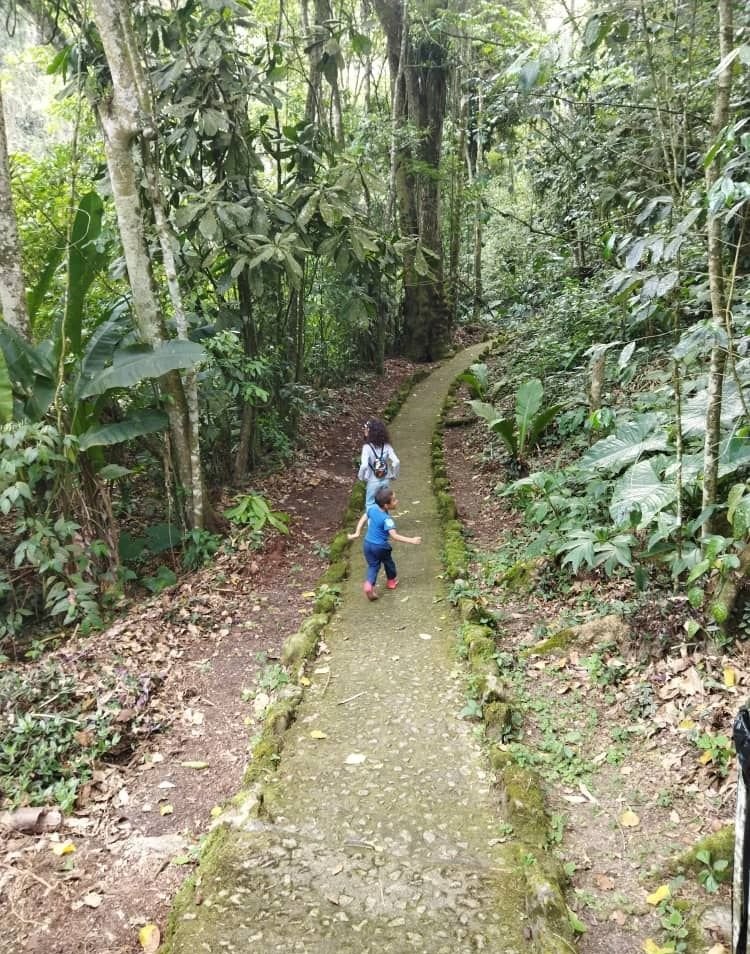
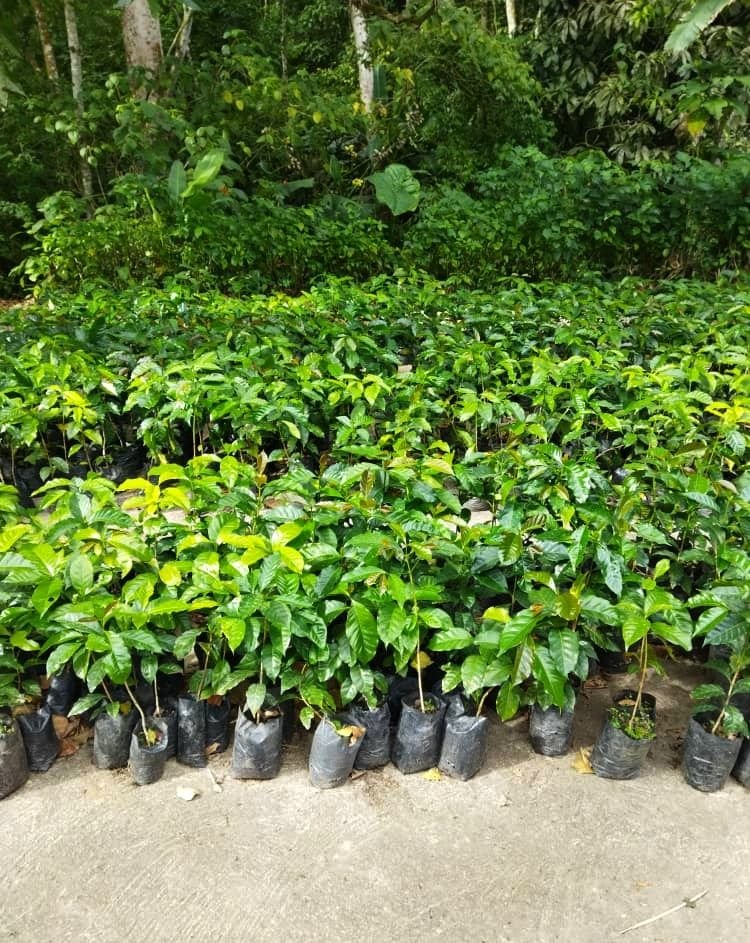
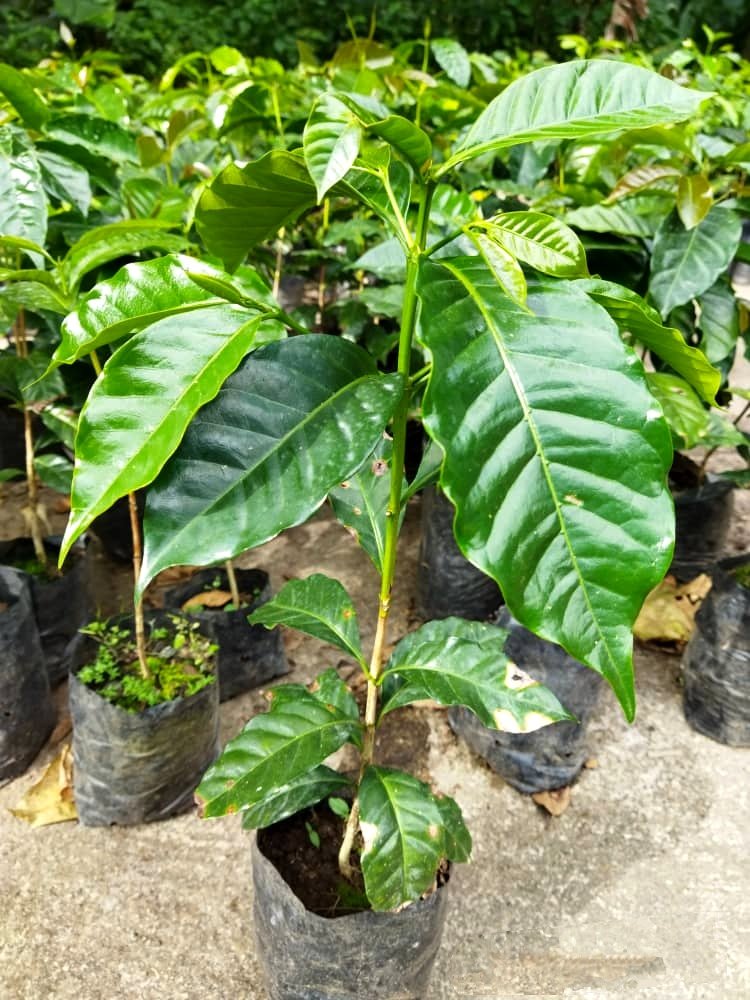
After the tour of the area you can sit on the large steps in front of the entrance of the cave and enjoy the site eating a good sweet or taking pictures that will remain for the memory because the whole landscape is beautiful. Unfortunately inside the cave you can not take pictures, but there are beauties that have been formed over time and the action of water on the stones, of the forms that I remember and that I saw so many times there are formations like elephants, turtles, one similar to a couple embracing even there is a kind of giant mantle that when the light reflects on the minerals that the water leaves makes it look like a blanket with diamonds and precious stones. There is also a room that is reached after crossing the room of silence, which have formed on the floor replicas of women's breasts, the site is called: the room of the tits of Maria Guevara, this woman of legends or real life that was known for sure for her big breasts, hahaha, because on the site there are many of those. Therefore, it is not the same to be told about it than to see it for your own eyes, if you are able to visit this tourist site it is worth it. Now a few months ago the park has barely been reactivated, but little by little and on weekends is when you see more visitors. As a last piece of information I can tell you that the entrance to the tour inside the cave for now does not have a specific cost, but the group that decides to enter, which by the way is a journey of 1,200 meters to the end allowed with a tour guide, can pay what they consider or agree just with the guide, there is not yet a fixed rate.
Luego del recorrido de la zona queda sentarse en los grandes escalones frente a la entrada de la cueva y disfrutar el sitio comiendo un buen dulce o haciendo las fotos que quedarán para el recuerdo porque el paisaje total es una hermosura. Lamentable dentro de la cueva no se puede tomar fotos, pero allí hay bellezas que se han formado con el tiempo y la acción del agua en las piedras, de las formas que yo recuerdo y que ví por tantas veces hay formaciones parecidas a elefantes, tortugas, una parecida a una pareja abrazada incluso hay una especie de manto gigante que al reflejarse la luz en el los minerales que el agua deja hace que parezca una manta con diamantes y piedras preciosas. También hay un salón que se llega después de atravesar el cuarto del silencio, que tienen formados en el piso réplicas de senos de mujer, el sitio se llama: el salón de las tetas de María Guevara, esta mujer de leyendas o de la vida real que era conocida de seguro por sus senos grandes, jajaja, pues en el sitio hay muchos de esos. Por eso, no es igual que te lo cuenten a verlo por tus propios ojos, si te es posible visitar este sitio turístico vale la pena. Ahora hace unos meses a penas se ha reactivado la actividad del parque, pero poco a poco y en los fines de semana es cuando se ven más visitantes. Cómo último dato les puedo decir que la entrada al recorrido por dentro de la cueva por ahora no tiene un costo específico, sino que el grupo que decide entrar, que por cierto es un recorrido de 1.200 metros hasta el final permitido con un guía turístico, pueden pagarle lo que consideren o acuerden justo con el guía, no hay aún una tarifa fijada.

Well, the trip was made through the photos and the story to know this cave of the guacharo, wonder of nature made by God and that reflects his greatness and power. There are still places in this cave where experts have not come to explore because it is very large, even according to some tour guides say that there are people who have had the audacity to enter and pass the limits set without notifying the authorities in charge and unfortunately have been lost inside, do not get the exit and have disappeared, it is sad. I enjoyed very much relating this trip because I remembered my childhood and at the same time I could imagine entering this cave again. The photos presented here are my property. I hope that whoever reads this post will like to know part of this site considered a natural monument and National Park in Venezuela. See you next time.
Bueno, se hizo el viaje a través de las fotos y el relato para conocer esta cueva del guacharo, maravilla de la naturaleza hecha por Dios y que refleja su grandeza y poder. Aún hay sitios en esta cueva donde no han llegado los expertos a explorar pues es muy grande, incluso según algunos guías turísticos de ella dicen que hay personas que han tenido la osadía de entrar y pasar los límites fijados sin notificar a las autoridades encargadas y lamentable se han perdido dentro, no consiguen la salida y han desaparecido, es triste!. Disfruté mucho relatando este viaje pues recordé mucho mi infancia y a la vez pude imaginar entrar de nuevo a esta cueva. Las fotos aquí presentadas son de mi propiedad. Espero que el que lea este post le agrade conocer en parte este sitio considerado monumento natural y Parque Nacional en Venezuela. Será hasta una próxima.
Source of reference: //Fuente de Consulta:

Banner made with canva.com //Banner realizado con canva.com
Separator:** Separadores de texto para Blog
Congratulations, your post has been added to Pinmapple! 🎉🥳🍍
Did you know you have your own profile map?
And every post has their own map too!
Want to have your post on the map too?
Este lugar está en mi lista de sitios a conocer y leyendo tu post más, muy completa la información que das, con detalles que no había leído antes de este lugar. ¡Gracias por compartir, saludos!
Que bueno que lo tengas en tu lista @sofathana pues vale la pena. Tiene un atractivo único. Espero tengas éxito en tu viaje a este bello monumento nacional💪. Sí esos detalles son quizás de tantas veces que visité esta cueva, jajaja, cómo dije desde pequeña la visito y ya hay cosas que de memoria las conozco🤭. Otros detalles uno los aprende de lo que los guías turísticos. Me alegra que te haya gustado mi post💗. Gracias por comentar.Que estés bien!!🤗🏵️🌺🏵️
Creo que ya puedes ser guía de la cueva también jejeje, un abrazo 🌻
Seguro que sí, jajaja!!.. 🌼
Hiya, @LivingUKTaiwan here, just swinging by to let you know that this post made it into our Honorable Mentions in Daily Travel Digest #1516.
Your post has been manually curated by the @pinmapple team. If you like what we're doing, please drop by to check out all the rest of today's great posts and consider supporting other authors like yourself and us so we can keep the project going!
Become part of our travel community:
Thank you for that! Excellent initiative👍. Thank you very much!!!🤗